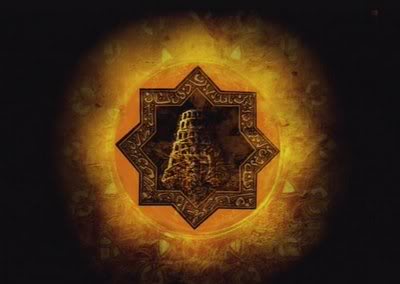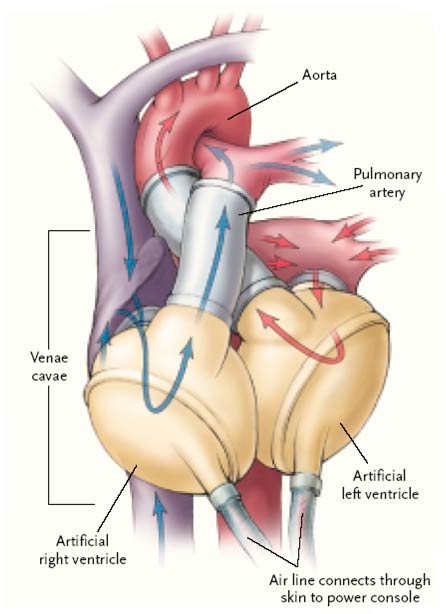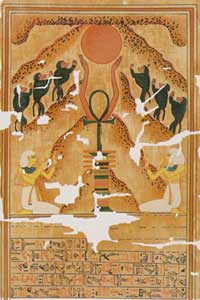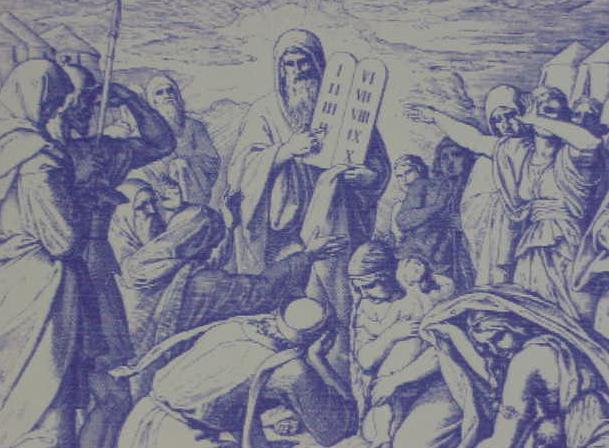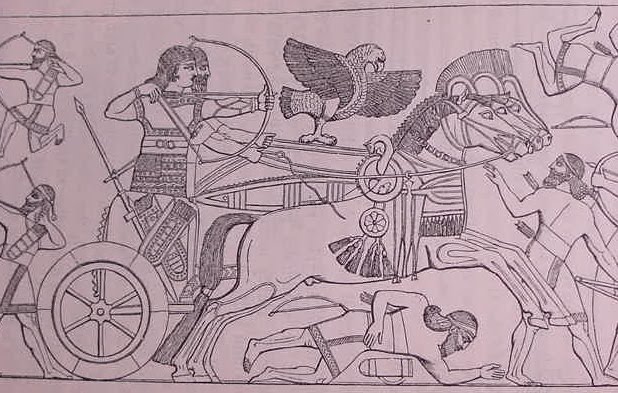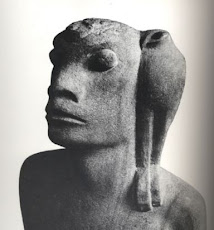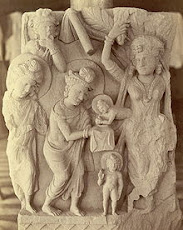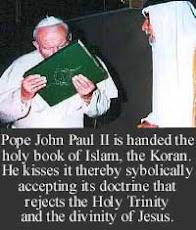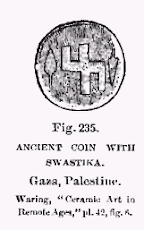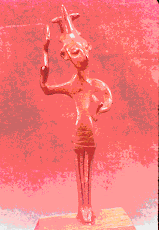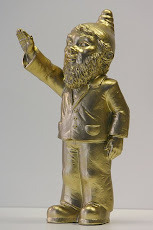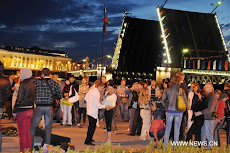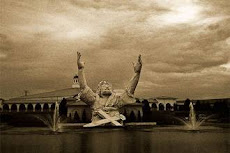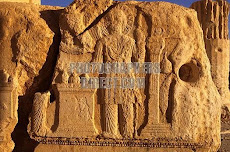When there are reports of media blackouts, then the natural reaction is to start investigating, and in the current environmental catastrophe, the more stones one turns, the more horrific the potential scenario becomes. While scare mongering is as pointless as it is dangerous, the truth remains that the media have the duty to inform.
What exactly is going on in the Gulf of Mexico? US-based geologist Chris Landau and writer Terrence Aym are but two of a growing number of researchers who are trying to find out exactly what is happening, amid reports of a media blackout, amid reports of Federal agents blocking journalists from the centre of operations, amid reports of threats of 40,000-dollar fines and felony arrests. To hide what? Let us see.
Deepwater Horizon was the state-of-the-art oilrig, specialized in deepwater drilling, constructed in the Republic of Korea (South) in 2001, leased to BP Exploration until 2013. In September 2009 it was set up in the Gulf of Mexico and started drilling in waters 1,259 meters deep. The oil and gas well it bored into, in the Tiber reservoir, was 9,426 meters below the seabed. It is the deepest oil and gas well in the history of the planet.
But did they know what they were doing? It appears not. Before the well blew out on April 20, 2010, an email sent from a BP member of staff had called it “a nightmare well” and it appears that a catalogue of mishaps preceded the disaster, occasioning the sinking of Deepwater Horizon two days after the blow-out and the loss of 11 crew members among the 126 on board.
Halliburton Inc., for instance, had warned BP that it should use 21 centralizers, to make sure the attack was made right at the center of the well; BP used just 6. BP also chose the casing option over the liner one, because it cost 7 to 10 million dollars less and was faster.
This was one of a number of debates and arguments leading up to the disastrous explosion on April 20 (see sources below). In this apparently callous and careless approach to the world’s deepest-ever well, this lackadaisical attitude in approaching new frontiers of engineering science, what has been done?
For a start, it appears that the Ocean bed has been ruptured, it appears that dangerous levels of methane gas are being released (methane storms wiped out nearly 100% of life on Earth already twice before, and the source was the same geographical area), it appears that the sea-bed is starting to collapse, it appears that the well is breaking up.
For Chris Landau*, there is the possibility that the oil in this reservoir is new oil, being produced all the time, and this being the case, the high pressure from the leak is never going to drop, meaning that the best BP can do is to continue to allow the oil to flow. This is the good news.
The bad news
The bad news is that the casing has been ruptured well below the seabed. The bad news is that the integrity of the well is compromised (it could collapse), the bad news is that oil and gas are eroding the surrounding rock (soft rock) and the bad news is that no amount of relief wells will solve anything.
The result will be a massive release of oil into the ocean.
The worse news
Even worse is the fact that this is not just an oil well. It is an oil and gas well. In fact at a proportion of 60/40%. What does this mean?
Given that the normal quantity of methane erupting from a well is 5%, it means that this reservoir at best is spewing eight times more methane gas into the Gulf than would be considered normal. Not two times or three… but eight.
Terrence Aym* states that “Methane levels in the water are now calculated as being almost one million times higher than normal”. Why is this frightening?
The worst news
Methane gas bubbles wiped out the planet’s life-support systems twice (the Permian extinction event 251 million years ago and the Late Paleocene Thermal Maximum 196 million years ago). Both came from beneath the Gulf of Mexico, where BP drilled the world’s deepest well.
The same source claims that the three tell-tale signs are present in the Gulf of Mexico, pointing towards an impending catastrophe: “the appearance of large fissures or rifts splitting open the ocean floor, a rise in the elevation of the seabed, and the massive venting of methane and other gases into the surrounding water”.
Methane and other toxic gases are already pouring out from the seabed, so much that the rescue workers are using military-style gas protection gear; pressure is building under the ocean bed, according to some claims, thousands of square kilometres are affected. The ocean bed has reportedly risen 10 meters in the area around the well; fissures between ten and thirty miles from the epicentre have started to appear.
And apart from all this, 5,208,000 gallons of oil per day are pouring into the Gulf. Imagine the impact of that on wildlife. Therefore, given this scenario, do we not have the right to know what is going on? If the US Federal agencies have imposed a blackout on news, let the cybernauts of the world unite and find out what is happening. After all, our lives depend upon it and after all, the independent press is here to inform, not misinform.
Timothy BANCROFT-HINCHEY , PRAVDA.Ru
Deepwater Chernobyl
June 10, 2010 - 18:00 | Unenergy
A while ago I watched a documentary on building the sarcophagus which encloses the Chernobyl Nuclear disaster site. I have unsuccessfully, tried to find that documentary as my recollection runs that the radioactivity released from the Chernobyl site was only able to be stopped by burying the reactor core in sand, concrete and an outer shell called a sarcophagus.
There seem to be parallels with the current Deepwater Horizon disaster in that we are witnessing once more that man is capable of unleashing uncontrollable forces in his pursuit of energy. Forces he had no contingency plan to deal with. Forces capable of devastating economies, destroying livelihoods and killing wildlife by contaminating the environment to such an extent that even people find they have to move away rather than suffer.
That the only way that we have to fix it once that bottle is uncorked, was to just bury it in concrete. In Russia the reactor core was covered in sand then concrete. In the Gulf of Mexico disaster, first mud was tried, but once the relief wells are drilled, it will be likewise be filled with concrete.
Based on this I went looking for supporting evidence to back up this initial premise, and am astounded by what I found.
I came across a documentary in Russian, subtitled in same, but with a voice over in English, which appears to have been produced by National Geographic. The 6 videos run in total for about 45 minutes, but are the foundation around which I have built my comparison below, so really should be watched alongside the comparison.
Deepwater, Chernobyl, a comparison of man made energy related disasters
Disaster at Chernobyl part 1 of 6
This documentary starts off with a ticking time bomb clock, like that used in episodes of 24 signifying impending disaster.
Chernobyl : Reactor 4 was a new plant for Chernobyl which after passing a safety test it would be going into full production.
Deepwater : This was a new well for BP which after being capped and passing a safety test, a different rig would float into place and the well would be in full production.
Chernobyl : An argument between senior power station operations staff and an overseer on how the plant operation would proceed erupted leading up to the Chernobyl explosion
Deepwater : An argument between Drilling operations staff and visiting BP overseers on how the plant operation would proceed leading up to the Deepwater Horizon explosion
Chernobyl : Out of sight design flaws with the plant were unknown to power plant operations staff in the Chernobyl plant
Deepwater : Out of sight well capping, cementing (and possibly design) flaws with the well/bore were unknown to drilling rig operations staff on the Deepwater Horizon
==========================================================================
Disaster at Chernobyl part 2 of 6
Chernobyl : This particular test was being ordered from on high, by the owners of the plant, the Soviet Government
Deepwater : This expedited change from a drilling rig to a production rig was being ordered from on high, by the owners of the well, BP
Chernobyl : The argument by the non-operator in the control room with the operations staff, was won by him primarily as he saw no-one as his equal. Because he was a creature of the system. A party man. Who took shortcuts and risks when needed.
Deepwater : The argument by the visiting BP staff with the rig staff was won by them. Was it because they saw no-one as their equals, were company men there taking risk when needed? Time will tell.
Rig survivors: BP ordered shortcut on day of blast
BP won the argument, said Doug Brown, the rig's chief mechanic. "He basically said, 'Well, this is how it's gonna be.' "
Chernobyl : The Chief Engineer who ordered this test was home in bed
Deepwater : The Management staff who ordered the expediting drill to production rig were ???
Chernobyl : There were fishermen watching the plant from afar
Deepwater : There were fishermen watching the rig from a distance
This next video I have edited out a section as when I saw this I was shocked at the similarities. Please watch.
Sunday, July 25, 2010
Wednesday, July 14, 2010
ELEMENTS OF HELIOCENTRIC RELIGION
The Heliocentric astronomy of Copernicus did not succeed the geocentered astronomy of Ptolemy because Copernicus’s system corresponded to experience and Ptolemy’s didn’t. With sufficient epicycles Ptolemy’s system could be made to correspond to our observations. The Copernican heliocentrism had won for political reasons. The fight against the religious heritage of the Hebrew Bible was what united the Roman Catholics and the Muslims. Very early we observe the growing alienation of the Roman Church from the Old Testament and Hebrew roots because of the Hellenization and universalization of the Christian message. On the other side, for the millions of Muslims Abraham was neither Jew nor Christian, but the first Muslim. He was believed to have founded the Kaaba in Mecca as the central sanctuary of the one God, and in this way he became the ancestor of the Arabs. On this political premise, the 12th-century Arab philosopher Averroes based his criticism of the Ptolemaic system and of the Biblical geocentrism for that matter: “Therefore new research work is necessary in order to find the “true” astronomy, which can be derived from the true principles of physics. As a matter of fact, today there is no astronomy at all, and what we call astronomy is in agreement with our computations but not with the physical reality.” Popular myth saw Averroes as a vile atheist. Thomas Aquinas’s judgment of the Ptolemaic system sounds as a paraphrase of Averroes’s criticism: “The assumptions made by the astronomers are not necessarily true. Although these hypotheses seem to be in agreement with the observed phenomena we must not claim that they are true. Perhaps one could explain the observed motion of the celestial bodies in a different way which has not been discovered up to this time.” Copernicus’s only motive in his research was his conviction that there was no established doctrine and, not a spirit of opposition against the established doctrine. That explains the facts that he joined to his book the letter he had received from Cardinal Schoenberg some years before and that he dedicated his work to Pope Paul III. Card. Schoenberg urged him to publish his book: “Thus, learned Sir, I hope that I will not be deemed a nuisance when I urgently request you to communicate your discovery to the learned world.” Tiedman Giese, Bishop of Kulm also insisted for a long time on publication. Copernicus’s brother Andreas was a high-ranking curialist… John Paul II knew what he was doing when he “rehabilitated” Galileo who, like Muhammad, believed in “7 hanging paradises” and 70 virgins awaiting him…Like Faust, Galileo signed a contract with the author of the “Satanic verses”!
The Egyptians delighted in gods who were at one moment material animals or objects (The Egyptians, for example, called water the Primeval Father, an idea which inspired Tales of Miletus’s doctrine of water as the source of all being), and at another, shadowy beings ‘mysterious of shape’ and ‘multiple of faces’ (Christian Trinity is often portrayed as one person with three faces). They never visualized their deities as truly anthropomorphic beings, and with a few exceptions, never depicted them with human forms, but as animal or half-animal creatures suggestive of another world. It has been said that the Greeks attained distinctive influence in the world because they liberated thought from the bondage of religious ritual: it serves as accurately to say it was because they had no moral gods to bind their thoughts with divine imperative. They adhered stubbornly to the conviction that their deities were incarnate in certain animals, and they held these animals sacred and on occasion paid them the same homage as they paid to gods themselves.
The Egyptians viewed the magic inherent in things and words as an effective force which could be transferred from one amulet to another, from one sacred image to another, and from one man to
another. The gods used magic to create the world, and the magicians used it to control both the world and the gods. A magician parted wide the waters of a deep lake that he might walk on dry ground to recover a lost jewel; another stopped the sun in its course (Gen 37:9 Joseph says to his brothers: “Behold I have dreamed a dream more; and behold, the sun and the moon and the eleven stars made obeisance to me,” for which he was sold to Egypt), another rent the earth, another correctly prophesied the future; another read the contents of an unopened roll of papyrus, and on occasion the more courageous sorcerer-priests threatened to pull down the very pillars that supported the heavens and to destroy the gods themselves if their commands were not obeyed immediately. The word ‘justified’ was applied to the dead to mean innocent, triumphant, assured of immortality, and the resurrected dead were called ‘justified of Osiris.’ A spell was included which contained words of such power that should the deceased fail to be ‘justified’ he could cast the sun god himself down into the Nile.
The sun god Ra was the ruler of the heavens, the celestial counterpart of pharaoh, who lived upon Truth and judged the dead. By the IVth dynasty he was the official god of the king, and although
he was later displaced in the hearts of the people by the grain god, Osiris, the solar theology long continued to hold the royal affection.
The god Aten had originally represented merely the physical sun, but Amenhotep stripped that body of all the gross theological conceptions which had been linked with it ever since the Pyramid Age and endowed it with new esoteric meaning. The ancient symbols of Ra – the pyramid, the falcon, the lion and cat- he replaced by a simple CIRCLE representing the sun’s disk from which diverging beams radiated downward, each ray ending in a human hand. Presumably, this symbol was conceived to indicate the new sun god’s power to reach out and touch with his beams every aspect of life, every man, every country in the world; perhaps he king thought that such a symbol would appeal as strongly to the people of the Sudan and Syria as to the dwellers along the Nile for whom alone such archaic figures as the pyramid or falcon had any meaning. The Hindu Vishnu holds a disc or a rounded piece of gold in his hand. The Egyptian Ra wears a disc as a crown. The sun has other attributes than mere roundness. It is a fiery disc and may therefore be surrounded by flames. The rayed circle or the circle surrounded by flames has a common decorative or heraldic motif for centuries. The charka (wheel) represented the sun in early Vedic ceremonies. With the wheeling planets overhead and the circumference of the horizon, the cosmos of the ancients must have seemed obviously circular. Life in the cosmos was created, and maintained, by the balance of opposing forces – male and female, day and night, heat and cold, good and evil, attraction and repulsion. Such ideas as this concerning the nature of the universe were summarized in the “wheel of life”. To this diagram of cosmic principles, must be added a concept which seems, almost visibly, to set the cosmic circle to revolving like a wheel. This is the idea, present in Sanskrit, Pali, and Greek, that life occurs in an endless cycle of rebirths. The concept of succeeding cycles based on four – emanation, fruition, dissolution, and re-emanation – is fundamental in Hindu philosophy and art. Atenism was a solar doctrine transformed by the substitution of abstractions and universals for gross details and local human myths. Aten was the single divine being who had created all things; he created the germ in woman, and seed in man, and nursed the son in the womb. This mythology inspired Aristotle’s dogma proclaiming that, Mankind is the son of heaven, which is most perfect in its all works; for man is generated of man and sun (Physics, II. 2, 11). Interestingly, Shakespeare wrote of “the sun breeding maggots in dead dogs.” In Huxley’s scientific (i.e. heliocentric) utopia the teeming streets of London appeared to the hero to be filled with crawling maggots rather than people.
Archeology tells us that circles of stones long antedate the time frame of Joshua, Exodus, and the Canaanites. The most striking aspect of the art of the Neolithic Age is to be found in the great megalithic monuments and stone tombs. A typical megalithic monument is the menhir, a single large stone on end, and the trilithon, which consisted of two stones on top of which a third, was laid like a linthel. Out of the menhir developed the alignment, a low row of menhirs, and the cromlech, menhirs standing in a circle. It is quite likely that the circles came down through Canaanite tradition playing a role in Sun-worship. A miracle of the sun occurred shortly after Joshua’s collecting of the stones which did not mean an assimilation by the Hebrews, of Canaanite sun-worship and the sanctity of stone circles. In the Sorek valley, near a town known from antiquity as Is-Shemesh, meaning “town of the Sun” and believed to be an ancient center of sun-worship, archeologists have discovered a 5500-old Canaanite temple edged by an arrangement of stone slabs that looks for the entire world like a forerunner of Stonehenge. Sorek is the legendary birthplace of Samson, biblical nemesis of the Philistines. The Bible follows Israel’s 12 memorial stones from the temporarily dry bed of the Jordan (Josh 4:19) to a place called Gilgal and then loses track of them forever. The word ‘gilgal’ means ‘a circle of stone’, and throughout Europe and the Mideast, circles of large stones have been found dating back a quarter million years or more, to Homo erectus times. The most famous stone circle is Stonehenge. Stonehenge well corresponds to Diodorus’s description of a “magnificent temple of Apollo” which he locates “in the centre of Britain.” It is a circular enclosure,” he says, “adorned with votive offerings and tablets with Greek inscriptions suspended by travelers upon the walls. The citizens are given up to music, harping and chanting in honor of the sun.” It was doubtless at Stonehenge that the British Apollo was seen harping and dancing. (Cf. Apollo Musagetes! And Musica Mundana by R. Fludd).
Ancient phallic stones are still standing in western Syria, but in Palestine such monuments are rare because after the captivity the Israelites, having learned the folly of ‘idolatry’, looked down upon stone worship with contempt and eradicated all these ‘idols’. That the practice of sacrificing a human victim to supply a foundation deity for important buildings, widespread in later times, was observed in Syria is indicated by the fact that at Megiddo the skeleton of a 15-year-old girl was found built into a wall, and when Hiel, the Bethelite, built Jericho, “he laid the foundation thereof in Abiram his first-born, and set up the gates thereof, in his youngest son Segub. “ (1 Kg 16:34; Josh 6:26)
Like a Middle Eastern Stonehenge, five concentric stone circles – the outer one a third of a mile around – rise above the Golan Heights. Known as Rujm el-Hiri – Arabic for “stone heap of the wild cat” – the site escaped scientific scrutiny until after Israel occupied Syria’s borderland in 1967. The rubble walls, up to 8 feet high and 11.5 feet wide, incorporate both small stones and massive slabs weighing tons. The stone structure served as a ceremonial center and probably was witness to rituals linked to astronomical observations. The northeast gate, at top, lined up perfectly with the summer solstice sunrise. In a central cairn some 65 feet in diameter, the Israeli archeologists found a looted burial chamber dug about 1,500 years after the walls went up.
High Place of Gezer, where Canaanites worshipped contained ten monoliths or upright pillars, varying from five to nearly eleven feet in height, one of which was the sacred stone, as the smooth spots on it show. Judging from the scarabs found at Gezer, this high place was in use in 2000 BC and it continued to be a place of worship down to the time when the Jews were carried off to Babylon. Among the fragments of pottery is a brazen serpent, suggesting that live sacred snakes may have been kept in the temple, and it may have been here that Hezekiah broke the images, cut down the sacred trees and destroyed the brazen serpent that Moses had made and to which the children of Israel were burning incense.
Beneath this High Place is a cemetery of newborn infants, some of the bodies displaying marks of fire, and most of them enclosed in large jars into which they had often been put head first. That the children were live sacrifices is probable from the fact that throughout the traditions of the East dead bodies were unclean and would never be brought near a sanctuary. That the cult of the Mother Goddess had intermingled with stone worship at Gezer is shown by the fact that a great plaques bearing the figure of Ishtar were found in the ruins. Just as at Stonehenge, evidence of ritual activity is found at Woodhenge. A 3-year-old child was killed by a blow to the skull and buried near the center and on the solistically aligned axis of the rings. Chalk as heads, too soft to be of any practical use, were retrieved from Woodhenge postholes. Symbolic axes are known from other sites, including Stonehenge, and imply, as do the burials, some act of consecration or ceremony. There are more than 900 stone circles on the British Isles, and they range considerably in age and design.
On the Arab peninsula the most important of the shrines was the Kaaba, which was situated by the sacred spring of Zamzam in Mecca. The granite boxlike shrine seems to be extremely ancient and was similar to other shrines and sanctuaries which have not survived. Embedded in its eastern corner was the sacred Black Stone, which may have been a meteorite that had once hurtled brilliantly from the sky, linking heaven and earth. At the time of Muhammad, the Kaaba was officially dedicated to the god Hubal, a deity who had been imported into Arabia from the kingdom of the Nabateans in what is now Jordan. Around the Kaaba was a circular area where pilgrims gathered to perform the ceremony of tawwaf, seven ritual circumambulations of the shrine following the direction of the sun. The shrine was also surrounded by 360 idols, or effigies of the gods, that may have been the totems of all the different tribes that come to worship there during the appointed month. It seems that the shrine itself was common in the Semitic world. The circle, the four corners (representing the four corners of the world) and the 360 symbols around it seem to have come from the old Sumerian religion. The Sumerian year consisted of 360 days and five extra holy days, which were spent ‘outside time’ as it were, performing special ceremonies that linked heaven and earth. In Arabian terms, these five special days might have been represented by the hajj pilgrimage, which took place once a year and was attended by Arabs from all over the peninsula. The hajj would start at the Kaaba and then proceed to various shrines outside Mecca, all of which seem to have been a way of persecuting the dying sun in order to bring on the winter rains.
The shrine itself probably represented the world, with its four corners radiating from a central point. The circle seems to be an archetype, found in nearly all cultures as a symbol of eternity, of the world and the psyche. It represents, in both temporal and spatial terms, a totality: tracing a circle or circumambulating – a common religious practice in many traditions – means that you are constantly coming back to where you started: you discover that in your end is your beginning.
Reflecting on the box-like structure of the Kaaba keep in mind that in the 6th century Cosmas Indicopleustes described the earth as a flat parallelogram four hundred days’ long and two hundred broad, surrounded by four seas from which arise the massive walls supporting the firmament, the whole making up a BOX containing the heavenly bodies and serving as a floor for heaven…Its four cornerstones correspond to the four seasons, its 12 months to the 12 loaves of bread; its box-like structure agreed with the Egyptian lore. The box-like structure of the heliocentric universe is described in a quatrain from the Rubaiyat by the Persian poet Omar Khayyam:
‘This nothing but a magic Shadow-show
Played in a box whose candle is the Sun
Round which we Phantom Figures come and go.
The circumambulations around the Kaaba recently inspired the late Iranian philosopher Ali Shariati: “As you circumambulate and move closer to the Kaaba, you feel like a small stream merging with a big river. Carried by a wave you lose touch with the ground. Suddenly, you are floating, carried on by the flood. As you approach the centre, the pressure of the crowd squeezes you so hard that you are given a new life. You are now part of the people; you are now a Man, alive and eternal…The Kaaba is the world’s sun whose face attracts you into its orbit. You have become part of this universal system. Circumambulating around Allah, you will soon forget yourself…you have been transformed into a particle that is gradually melting and disappearing. This is absolute love at its peak.”
Similarly as in Egypt, in India too the great Hindu Trinity itself of Brahma, Vishnu, and Shiva is subject to the sorcerers, who, by means of their spells, exercise such an ascendancy over the mightiest deities, that these are bound submissively to execute on earth below, or in heaven above, whatever commands their masters the magicians may please to issue. There is a saying everywhere in India: “The whole universe is subject to the gods; the gods are subject to the spells (mantras); the spells to the Brahmans; therefore the Brahmans are our gods.” The teaching of Jesus, Verily I say unto you, Whatsoever ye shall bind on earth shall be bound in heaven: and whatsoever ye shall loose on earth shall be loosed in heaven (Mt 18:18), belongs to the same religious tradition A fragment of a manuscript found at Qumran (4Q521) reads: “The heavens and the earth will obey His Messiah. He will release the captives, make the blind see, raise up the downtrodden then he will heal the sick, resurrect the dead, and to the poor announce glad tidings. The lines Jesus read to his followers at the synagogue in Nazareth, describing the signs he had worked, were almost identical to Isaiah 61:1, except for one glaring difference, a difference that is shared with our Dead Sea Scroll text. Is 61:1 says nothing about this Anointed One raising the dead. Yet in Mt 28 and Luke 4 we find the reference to raising the dead linked to glad tidings for the poor.
In Rome, there arose a body of rules, the jus divinum (divine law), ordaining what had to be done or avoided. These precepts for many centuries contained scarcely any moral element: they consisted of directions for the correct performance of ritual (magic – cf. transubstantiation). Roman religion laid almost exclusive emphasis on cult acts, endowing them with all the sanctity of patriotic tradition. The upper class attitude of the times was expressed by the historian Polybius, the scholarly Varro, and the orator and philosopher Cicero, who maintained that the importance of religion was political, residing in its power to keep the multitude under control, to prevent social chaos, and to promote patriotic feeling. Strabo observed: “A rabble of women and promiscuous vulgarians cannot be induced to answer to the call of Philosophic Reason if you want to lead them to piety and holiness and faith. In dealing with people of that sort, you cannot do without superstition; and superstition, in its turn, has to be fed with fairy tales and hocus-pocus.” (Some derive this expression from the Latin formula “Hoc est corpus” this is the body of transubstantiation). This was the Pythagorean tradition; associated with this philosopher is the doctrine of the soul’s immortality and its reincarnation in a cycle of lives in the animal and human spheres (metempsychosis). The body is regarded as the prison or tomb of the soul, which may be purified in an ascetic life of study. As not only Ovid, but as many historians declare Numa Pompilius disciple of Pythagoras and the wisest emperor of Rome, supported this hypothesis. According to Herodotus, Zamolxis was alleged to have first been a Thracian man in the 6th century B.C. Originally a slave of Pythagoras, Zamolxis obtained his freedom, became rich, and returned home to lecture his fellow Thracians (or Getes) on immortality. After disappearing for three years into a room he dug beneath his house, he emerged and thus, in the minds of the Thracians, confirmed his doctrine of immortality (Herodotus, History, Bk.IV, Ch. 95, 96). The immortal Getes killed every five year a man whom they send as a Messenger to Zamolxis. In the early 1680s, shortly before publishing the “Principia”, Newton began his work on a treatise which he called “The Philosophical Origins of Gentile Theology. This argued that Noah had founded the primordial religion – a Gentile theology – which had been free of superstition and had advocated a rational worship of one god. The only commandments were love of God and love of neighbor. Pythagoras had learned about this religion and brought it to the West. Jesus had been one of these prophets sent to call mankind back to the truth, but his pure religion had been corrupted. Trying to restore the pristine religion of Jesus, the Apostle of Pythagoras Newton identified gravity with the spiritual body of Jesus Christ. As he wrote in an early edition of his *Principia Mathematica: “It was the most ancient opinion of those who applied themselves to philosophy, that the fixed stars stood immovable in the highest parts of the world (this teaching was smuggled into the Vulgate together with the Latin term ‘firmamentum’) ; that under them the planets revolved about the sun, and that the earth, as one of the planets, described an annual course about the sun…The Egyptians were the earliest observers of the heavens and from them, probably, this philosophy was spread abroad.”
Pyramid text No. 523 reads: “Heaven hath strengthened for thee the rays of the sun in order that thou mayest lift thyself to heaven as the eye of Ra…” Painting on the tomb of Ramses IX, an Egyptian pharaoh illustrates the death and resurrection of the sun. And because it became customary to refer to the pharaoh as “son of the sun”, so it was believed that he was rising after his death as his parent himself. A pyramid, essentially a solar monument, allowed Pharaoh to ascent to the sun. Let me remind in this context that the Greek verb airo means to take, to seize, to draw, to attract; whence airen, that which takes, seizes, attracts i.e. the lodestone. The Greek aruan means both ‘lodestone’ and ‘rising sun’.
Thirty miles north of Dublin stands one of the great astronomical wonders of prehistoric Europe, a mound more than 260 feet in diameter and 30 feet high. The entrance opens onto a passage 62 feet long at the end of which lies a complex structure of huge rocks forming a cross-shaped chamber. On the floor of each arm of the cross lies a basin stone – a large, flat rock with a shallow indentation carved into it. In this area bodies of the dead were placed. This house of the dead predates the completion of England’s Stonehenge by 1,000 years and Egypt’s pyramids by several centuries. But Newgrange, as the structure is called, is more than a tomb; it appears to have been meant as a kind of cathedral to the life force embodied in the sun. Exactly, like the Egyptian pyramids. Ultimately, the building of such tombs so depleted the wealth of the builders that their economy collapsed and the land was left to lie fallow. Like Egypt. Behind structures like these there looms the perennial belief in spontaneous generation also referred to as abiogenesis, the theory that living things arise de novo without living parents from lifeless matter. Influenced by Egyptian religious beliefs, Aristotle concluded that some insects arise from putrefying earth or vegetable matter, oysters from slimy mud, lice from the flesh of animals, and so on. Paul in his 1 Cor 15: 35-36 teaches: “But some man will say, How are the dead raised up? And with what body do they come? Thou fool, that which thou sowest is not quickened, except it putrefy (die).” I. Newton, W. Shakespeare, W. Harvey, and R. Descartes were among the eminent scientists who accepted the theory without question. The medieval preferred spontaneous generation for much the same reasons that 20th-century scientists seek to explain the origin of life from a chain of molecules in the oceans of the primitive earth (Darwin’s warm pond).
For the ancient Indians, a destruction and recreation of individual forms and creatures occurred every Kalpa or day of Brahma. Each day of Brahma had duration of about 4 billion years. The elements themselves, together with all forms, undergo dissolution into Pure Spirit, which then reincarnates itself back into matter every lifetime of Brahma, which lasts about 311 trillion years. Among the Greeks who thought of the Brahmins as perfect Pythagorean philosophers, the Stoics were the most fervent believers in the Eternal Return (anakuklesis, lit. Eternal Wheel). They claimed that all objects in the universe were bound together in an absolutely determinate web of actions and reactions (this Stoic dogma was also embraced by Newton), and that this determinism led to a precise return of all events. That is, no event is unique and occurs once and for all, but rather every event has occurred, occurs, and will occur, perpetually (Cf. perpetual motion dogma); the same individuals have appeared, appear, and reappear in every return of the cycle. In each and every cycle Socrates will be tried, condemned, and executed. Plato’s cosmology was also cyclic, with a periodic destruction and recreation of the universe in conjunction with various astronomical events. The same belief is reflected in the Latin term resurrection which is used almost invariably in nonscriptural references. In the Gospel accounts it nowhere says Christ rose again, only that He was risen (some prefer to speak that he was raised). In the Latin version surrexit is used, not resurrexit (‘He has risen,’ not ‘He has risen again’ (the particle ‘re’ has the same meaning in Latin and English, ‘again.’). The term ‘resurrection’ makes sense, however, if one assumes the identity of Christ and sun. Impersonality of such a sun god matches impersonality of Brahma! This philosophy inspired Newton’s identification of gravity with the spiritual body of Jesus Christ. Here it is how Newton described his dogma of ‘transubstantiation’ in the paper entitled “De Aere et Aethere”: “Just as bodies of this earth by breaking into small particles are converted into air, so these particles can be broken into lesser ones by some violent action and converted into yet more subtle air which, if it is subtle enough to penetrate the pores of the glass, crystal and other terrestrial bodies, we may call spirit of the air, or the ether. The incorporeal ether which facilitates gravitation is actually the body or spiritual form of Jesus Christ.” Long before Newton, philosopher Anaximander proclaimed similar dogma, “The heavenly bodies have come into being from earth, because mist rose from the earth and was rarified and produced fire (ether), and the heavenly bodies are composed of fire when it is afloat.” Or, in the terms of Hindu philosophy, Worm of today is the God of tomorrow. In the Hellenized philosophy of schoolmen the same idea was expressed as follows: “The earth however, is all the higher bodies because the higher lumieres are summed up in itself; on that account the earth is called Pan by the poets – that is, All; and it is named Cybele, as if cubile, from the cube ( Cf. Kaba!), that is, from solidity; because the earth is the most greatly compressed of all bodies, that is, Cybele the mother of all the gods; because, though the higher lumieres are gathered together in the earth, nevertheless they are not arisen in the earth by their own operations, but it is possible for the lumiere of any sphere you please to be drawn forth from the earth into act and operation; and so whatever god you wish will be born of the earth as if of some mother.” (Cf. the Earth Day in the US and the Pope hugging the Mother earth!)
The same idea inspired the so-called Gifford Lectures on the subject of natural theology. In his will establishing the lectures, Lord Gifford asserted: “I wish the lecturers to treat their subject as a strictly natural science…without reference too or reliance upon any supposed…miraculous revelation…I wish it considered just as astronomy or chemistry. As the Yale historian of religion Jaroslav Pelikan put in the case of Christianity: “The victory of orthodox Christian doctrine over classical thought was to some extent a Pyrrhic victory, for the theology that triumphed over Greek philosophy has continued to be shaped ever since by the language and the thought of classical metaphysics. For example, the Fourth Lateran Council in 1215 decreed that “in the sacrament of the altar…the bread is transubstantiated into the body of Christ.”…Most of the theological expositions of the term’ transubstantiation’ have interpreted ‘substance’ according to the meaning given this term…in the fifth book of Aristotle’s Metaphysics; transubstantiation, then, would appear to be tied to the acceptance of Aristotelian metaphysics or even of Aristotelian physics…Transubstantiation is an individual instance of what has been called the problem of ‘the hellenization of Christianity.’“ According to Aristotle, the heavenly bodies were made of some unchangeable, incorruptible substance, quite different from that of the corruptible bodies of earth. This Aristotelian dogma inspired the teaching of Paul in his 1 Cor 15:40-44: “There are also celestial bodies, and bodies terrestrial: but the glory of of the celestial is one, and the glory of the terrestrial is another…So also is the resurrection of the dead. It is sown in corruption; it is raised in incorruption…It is sown a natural body; it is raised a spiritual body. There is a natural body, and there is a spiritual body (or astral body).”
The most distinguished deity of the Nile, the sun god was identified with the sacred scarab or dung beetle, khepra. The Egyptians supposed that the young beetles came out of the dung, self-created, and they saw in the dung beetle a mystical symbol of the sun god who daily rolled the ball of the sun across the sky. Similarly, the butterfly has for many centuries been depicted in Christian art as a symbol of the Resurrection. It is a sign of the believer’s share in Christ’s victory over death. As a very unattractive and earthbound worm, the little creature enters its cocoon for a deathlike sleep…then it bursts forth from its “tomb.”
A green scarab, symbol of the god Khepra and inscribed with a magic spell conveying resurrection and eternal life, was placed in the body where the heart had been. It had been the tradition, long before the worship of Osiris became widespread for the pharaoh to trace his ancestry direct to Ra, and it was to keep the solar blood uncontaminated that the king usually married his sister, or in some instances his daughter or another divine relative. When an invader of mundane antecedents gained the throne it was always discovered by the priests that he was descended from the solar god by a hitherto unsuspected genealogy, or that he had been conceived by Ra, who had descended to earth secretly and begotten him by a mortal mother in order to rejuvenate the race. (Cf. impregnating of Plato’s mother by Apollo).
We find the same celebration of the sun god in Rome. Suetonius writes that Atia, the mother of Augustus was impregnated during a solemn sacrifice to Apollo at midnight and therefore when Augustus was brought into the world, he was taken as a son of Apollo. Decree of calendrical change on marble stelae in the Asian temples dedicated to the Roman Empire and Augustus proclaims: “…the birthday of our God signaled the beginning the Good News for the world…therefore…the Greeks in Asia decreed that the New Year begins for all the cities on September 23…the birthday of Caesar.” On Sept. 23, on the fall of equinox, the shadow of the sacred obelisk of Heliopolis which was shipped to Rome to act as gnomon for Augustus’s sundial entered the Ara Pacis, or the temple of Peace built at the eastern end of the equinoctial line. Augustus did all he could to make men feel that the god Apollo had left Greece for Rome and had brought with him the spiritual and cultural leadership of the world.
Augustus’s great victory at the battle of Actium was won in the vicinity of a Temple to Apollo, which he proceeded to restore; Apollo, he claimed had appeared to him at a decisive moment in the battle. After the victory, Augustus built the Temple of Apollo on the Palatine in Rome, and added to it two fine libraries of Greek and Latin books, and a portico in which Greek sculpture was displayed. He transferred to the new temple the Sibylline Books from the Temple of Jupiter on the Capitol, and deposited them under the cult statue of Apollo in two gilt coffers.
Augustus appears to have shared and to have exploited the conviction that a revival of traditional religious customs and observances was necessary for the recovery of peace and harmony in the Roman world. There was a widespread expectation current through much of earlier part of the century, that a new era which would be a second Golden Age was about to begin. This belief was expressed in the famous Fourth Eclogue of Virgil, which foretold the birth of a boy under whose rule the world would enjoy peace and a miraculous Golden Age.
When persecution of the Christian was undertaken by Diocletian, or rather by his Asiatic Caesar, Galerius (303-311), it was because Galerius wanted to establish a church-state in the worship of the sun-god. The Christians renouncing the gods and the institutions of Rome had constituted a distinct republic. The magistrates interrupted their assembles and delivered their sacred books to the flames. (Recall that reading of the Bible was punishable by death in the Papal Empire). There is no wild beast like an angry theologian in the Pythagorean sense. The devotion of Constantine who is believed to have been the first Christian emperor was more peculiarly directed to the genius of the Sun, the Apollo of Greek and Roman mythology; and he was pleased to be represented with the symbols of the God of Light and Poetry. The altars of Apollo were crowned with the votive offerings of Constantine. The Sun was universally celebrated as the invincible guide and protector of Constantine. After he defeated his wife’s father, Maxmian at Marseilles in 310 Constantine’s fortunes were already being raised to the divine. On his way back to Trier from Marseilles, he stopped at the pagan temple in Autun a moment before the oracle that Eusebius enshrines: “O Constantine, you saw, I believe, your protector Apollo, in company with Victory, offering you laurel crowns…You really saw the god, and recognized yourself in the appearance of one to whom the prophecies of poets have declared that the rule of the whole world should belong.” News of this vision, with its implication of heavenly anointing by Apollo, who was identified with the sun god, would have been spread far and wide by Constantine’s panegyrists. As the historian of antiquity Averill Cameron points out, such claiming favor of the pagan gods offers the context in which to see the story of his subsequent vision at Milvian Bridge. The legend had it that in this vision Constantine was told to fight under the Cross; when he did so and won, he espoused Christianity. Did he really? That Constantine’s embrace of a Christian identity took place not all at once as in the legend, is revealed by the fact that Sol, the pagan sun god, continued to be honored on Constantine’s coins until 321. Even more strange is the fact that in the original version of the pivotal profession of faith, i.e. the Nicene Creed (325), not only is the death of Jesus not mentioned, neither is crucifixion even though in the 3rd century Saint Clement of Alexandria called the cross the sign of Christ, and Tertullian at about the same time referred to Chjristians as cruces religiosi! In the second version, equal emphasis on incarnation, suffering, and resurrection has been replaced by a strong emphasis on death, with the elaboration “suffered, died, and was buried.” Finally, the creedal statement, as reflected in the text we know, put the crucifixion at the center of faith and the death of Jesus at the heart of redemption. According to the theological shift reflected in the amended creed, the Son of God became man in order to be crucified. This shift has important implications for relations between Christians and Jews. With the cross at the center of a theology of salvation, it becomes the means of salvation. Can it be a coincidence that attacks on Jews, both rhetorical and physical, became a notable pattern of Christian behavior only after the cult of the cross is established, not at Nicaea, but in its aftermath? The absence of the crucifix in the early Christian history has nothing to do with its criminal connotation; it has everything to do with the pagan symbolism of the cross itself. Crosses have been found on the artifacts of most known cultures. The Phoenicians and other Semitic peoples are said to have added magical powers and associated the Egyptian cross (ankh) with Astarte as the Greeks associated crosses with Aphrodite, the Ephesian Artemis, and others. The Elamite and Sumerian cultures used crosses, and the Assyrian kings wore crosses as pendants symbolizing their sun god Shamash. This cross is a derivative of the wheel standing for sun god (Cf. the beautiful wheel of the Celtic sun god, the rota altivolans of Lucretius). The hub of the wheel is like the focal point of the circle. And it multiplies into innumerable designs, the wheel with spokes merges with the circle containing cross, star, triangle, or becomes divided into quarters of significant segments. The Gnostic wheel is composed of four cone-shaped spokes which terminate in four perfect circles. The connection of a solar wheel with a vehicular wheel is evidenced in a rite of the Brahmans in which chariot wheels are revolved around a stake while a hymn to the sun is chanted. The oldest heliocentric diagram showing the cross in a circle standing for the sun in the middle of the zodiac was found by Israeli archeologists. This ancient heliocentrism informed the beliefs of the Essenes who, according to Flavius, were Jewish Pythagoreans. A Julian calendar from the 5th century resembles the Shri Yantra mandala with concentric circles; the elusive center from which the entire diagram expands is marked by a cross.
The forum of Constantine’s New Rome, which was in the middle of the city, was of a circular, or rather elliptical form. (The same ambiguity is reflected in the circular scheme of Copernicus and the elliptical of Kepler and Newton) The centre of the forum was occupied by a lofty column. On the summit of the pillar stood the colossal statute of Apollo, and at its base a statue of Athena and baskets said to have held the bread Christ fed his disciples were enclosed. It was supposed to be the work of Phidias. The artist had represented the god of day, or, as it was afterwards interpreted, the emperor Constantine himself, with a scepter in his right hand, the heliocentrically conceived globe of the world in his left, and a crown of rays glittering on his head. It was reminiscent of the statue of Apollo at Pompeii who demonstrated in his left hand the heliocentrism of Pythagoras. Constantine proved his Christianity from Sibylline verses and from Virgil. Forty years before the birth of Christ, Virgil had celebrated the return of the Virgin, the fall of the serpent, the approaching birth of a godlike child, the offspring of the great Jupiter, who should expiate the guilt of human kind and govern the peaceful universe with the virtues of his father; and the gradual restoration of the innocence and felicity of the golden age. It was believed that in this poem Virgil had predicted the birth of Christ, and so Virgil was given something of the same status as the prophets of the Old Testament, who had also allegedly foretold the birth of Christ. And for this “Constantine himself was associated by the Roman Senate, after his death, to those gods whom he had renounced and insulted during his life. The title, the ensigns, the prerogatives, of Sovereign Pontiff, which had been instituted by Numa, and assumed by Augustus, were accepted, without hesitation, by seven Christian emperors; who were invested with a more absolute authority over the religion which they had deserted than over that which they professed” (Gibbon, The Fall of the Roman Empire). Interestingly, in Jerome’s Vulgate which was considered “Ciceronian” you can find the key-word of heliocentrism ’firmamentum’ which was given by the early astronomers to the orb of the fixed stars. Copernicus knew that to be politically correct in the Renaissance Rome he had to proclaim the imperial theology of Pythagoras and of his political exponents, the Roman emperors. And he did; his god was the sun god sitting on the royal throne and governing the family of stars surrounding him. Compromise was suggested by the Jesuit mathematician Boscovich: “As for me, full of respect for the Holy Scriptures and the decree of the Holy Inquisition, I regard the earth as immovable; nevertheless, for simplicity in explanation I will argue as if the earth moves; for it is proved that of the two hypotheses the appearances favor this idea.” On the 16th of August, 1820, the Congregation of the Holy Office reported that Settele, the professor of astronomy at Rome and Washington might teach (Venia legendi) the Copernican system as truth established. Quite recently Pope John Paul II recognized evolutionary hypothesis also as truth established (“More than a mere hypothesis”). The Roman War on the Jews is going on.
“All-nurturing sun” is praised by Horace and, in Virgil’s “Aeneid” we find “Sun, whose fires lighten all the works of the world.” And this tradition was continued forever; Nero built his Golden House and prefaced it with a colossus 120 feet high, bearing the likeness of his head haloed with solar rays that identified him with Apollo. In many ancient representations of the Savior in Italy, the words “Deo Soli” are inscribed, which signify alike “the only God”, and “the god Sol (Invictus) i.e. Mithra. The Christians dramatized the crucifixion in the form of the ‘mass’, which word in the Latin was possibly derived from the Mithraic sacred cake, or mizd. The rituals of “mystery cults”, though far from being uniform, nevertheless generally culminated in a sacramental drama that brought the initiates into close contact with the deity of the cult: with Isis, Mithras, Dionysos, or Jesus. Some of the mystery associations, especially the one venerating Mithras, included communal meals which the ancient author Pliny called “magical banquets” (magicae cenae). The slaughter of an ox or ram or pig was more or less a matter of daily experience, whereas symbolic human sacrifice, when coupled with the sacramental meal, the ‘drug of immortality’, served to evoke that emotional state which seemed more appropriate to the approaching Day of Judgment.
A wild animal that is moved into a cage in a zoo is still a beast. You may have heard reports of zoo workers being attacked. In some ways we can say the same about the celebration of Christmas. At first it was a “beast” living outside of Christianity. Under the subheading “Relation to the Roman Saturnalia,” The Christian Encyclopedia (in Korean) observes regarding Christmas: “The pagan Saturnalia and Brumalia were too deeply entrenched in popular custom to be set aside by Christian influence. The recognition of Sunday (the day of Phoebus and Mithras as well as the Lord’s Day) by Emperor Constantine may have led Christians of the fourth century to feel the appropriateness of making the birthday of the Son of God coincide with that of physical sun. The pagan festival with its riot and merrymaking was so popular that Christians were glad of an excuse to continue its celebration with little change in spirit or in manner.” The same Encyclopedia says: “Christian preachers of the West and the Nearer East protested against the unseemly frivolity with which Christ’s birthday was celebrated, while Christians of Mesopotamia accused their Western brethren of idolatry and sun-worship for adopting as Christian this pagan festival.” Yes, a festival of the sun-god, outside of true Christianity, was brought into the prevailing church. It got a different name – yet its pagan character remained. And it helped to infuse paganism into nominally Christian churches and to corrupt individuals’ spirituality.
How did it happen? At the Council of Nicaea in 325, the Emperor Constantine ordered: “Henceforth let us have nothing in common with this odious people (meaning Jews).” Following this policy, the Aryan dogma of Trimurti (“He, who is Vishnu, is also Shiva, and he, who is Shiva, is also Brahma: one being but three gods”) was adopted as the Christian dogma of Holy Trinity. This dogma became the subject of heated controversy between Athanasius who contended that Christ was made of substance identical with God (homoousios) and Arius, a presbyter of Alexandria who claimed that he was made only of similar substance (homoiousios). Over this doctrinal difference, turning about a single letter in a Greek word and involving the question of whether God and Christ were cosubstantial and coeternal, a mighty controversy was waged for centuries and thousands of persons lost their lives or freedom in the conflict. Most churchmen did not like this new dogma, since it was a Greek philosophical term not found anywhere in Scriptures. In fact, the new definition of Jesus sounded like the Buddhist dogma of multiplicity proclaiming that, as a transcendent being, Buddha multiplies himself and that all Buddhas (Sakyamuni) are consubstantiated (homoousios) with the essential body (God, the Father). Dipankara, the first of the 24 Buddhas traditionally held to have preceded Gautama, is depicted with a flame rising from his shoulders (Cf. the tongues of fire on the Apostles’ heads). Their worries didn’t stop with this question; the great Platonic philosopher Porphyry, had written that the souls of humans and animals were homoousios. For Porphyry the substance had the same meaning as the universal i.e. the element that an individual shares with others of a great class. For example, in man, the universal is his animal nature. Now we better understand why in the dogma of the Holy Trinity the Holy Spirit appears in the shape of a dove (animal). This is the same pantheism which inspired the ancient Egyptian priests and their zoo theology. For Aristotle God was “something” (i.e. impersonal like Brahma) that moves others without being moved, which is eternal and substance and actuality. And this idea links the Egyptian magicians who “stopped the sun in its course” with Copernicus who, according to popular saying “stopped the sun and moved the earth.” R. Boyle refused to communicate with Spinoza when he learned that the philosopher worshiped “Substance” as God. This Substance had for Spinoza the same meaning as the Wheel of the Law had for the Buddhists. The oldest Buddhist sculptures show the wheel in the place of honor upon altar, or in the shape of swastika upon a throne. The wheel became the Wheel of the Law with its thousand spokes – the Dharmachakra, the chain of cause and effect – which was set in motion for the salvation of humanity by Buddha’s revelation of the Four Great Truth. The title of the founder’s first discourse is “The Setting in Motion Onwards of the Wheel of the Law.” In Aristotle’s philosophy it was Prime Mover or Substance which set in motion onwards the Wheel of Natural Law.
Naturalism is a very dangerous system of thought; it lacks the sharp contrast between living and nonliving beings that is present in Judaism. Westerners tend to see robots as soulless hunks of metal, while the Buddhists tend to see them as living beings just like everything else, and hence innately good. The leading Japanese roboticist Masahiro Mori wrote an entire book, The Buddha in Robot (Keep in mind that the Russian term Stalin means “man of steel”), to espouse the idea that robots have, like humans, the potential to attain buddhahood, and that humans and robots should work together to help each other become buddhas (“enlightened ones”), just as the Indian Buddha of the 6th century B.C. devoted his life to helping all humans attain buddhahood. Mori asserts that “…to learn the Buddhist way is to perceive oneself as a robot.” Indeed, Masahiro Mori was inspired in his speculations by this passage from Copernicus’s Preface to his “De revolutionibus”: “When therefore I had long considered this uncertainty of traditional mathematics, it began to weary me that no more definite explanation of the movement of the World Machine (machine mundi) established in our behalf by the best and most systematic builder of all, existed among the philosophers who had studied so exactly in other respects the minute details in regard to the sphere.” Possibly some time in the future a robot will be added to the Nicean Trinity. The Aristotelian notion of substance allows such move! Because it belongs to pantheism which erases the sharp lines of distinction that are so peculiar to biblical religion and its derivatives. Radically monist, just as materialism is, it does not recognize any ontological difference between man and other living beings; between the living and the nonliving; between God and the universe. It insists on immanence, and sees the divine nature in all things and all people. Dali, pondering the implications of quantum physics and Teilhardian biology, concluded that “man in his constant evolution is coming closer and closer to a oneneness with God.” When the devotee of Eastern pantheism chants Atman is Brahman, he means that the soul of each person is the same as the soul of the cosmos (homoousios!). There is no distinction between man and the cosmos, between God and the cosmos, between God and man (here the idea of “Son of God” belongs). In Huxley’s pantheist utopia the hero, in drugged ecstasy, experiences union with the universe: “…a knowledgeless understanding, only union with unity is a limitless, undifferentiated awareness…Poured upward from union into completer union, from unpersonality into yet more absolute transcendence of selfhood.” Huxley had the correct understanding of Christ as preached by the “orthodoxy” of the Roman bureaucrats. Theirs is the cosmic Christ preached by St. Paul in his Letter to the Colossians in whom “were created all things in heaven and earth” and who “holds all things in unity.” Teilhard de Chardin who was both a mystic and a Marxist (like Pope John Paul II) also centered on to this cosmic Christ regarding him as the point to which all creation (or at least all of it that can be saved) is destined by evolution itself to converge. The same idea is behind the expanding and contracting point of Big Bang hypothesis. Behind this perverted science lies the Pythagorean dogma proclaiming that extended physical bodies are composed of nonextended mathematical points. Accordingly Zeno argued that everything in the universe is both infinitely large and has no size at all. The infinite divisibility of any physical body regardless of size means that it is composed of an infinite number of elements and thus is infinitely large. On the other hand, the body has no size at all because no number of nonextended units can produce an extended body.
Western thought came close to the basic dogma of heliocentric mathematics in Democritus’ theory of atoms and in Euclid’s “Elements”. The burning of the great library at Alexandria was supposed to prevent spreading of the Gnostic heresy but it failed. Behind the scholastic equivalency of light and matter which gives rise to the world machine by plurifying itself was the concept of the philosophers who speculated hat all things were composed of atoms and who said that bodies were composed of surfaces, and surfaces of lines, and lines of points. But since there is no reality to a mathematical point or line, except when they are being conceptualized as such the world of Euclid belongs to the same category as the world of Platonic ideas; though merely mental, they were the ultimate objects, of which the visible and tangible objects of the world were only pale shadows. And that’s exactly what the Indian yogis dismissed contemptuously as the illusory realm of maya. In the Eastern view, searching for some kind of reality, either in the physical world (prakriti) or in the rational mind (manas) is a sheer waste of time, since they are both ultimately unreal. The Buddhist aims at pure consciousness with no object in sight (alaya-vijnana), which is practically synonymous with sunya, the Void. Buddha merely stressed the sole reality of nirvana which the Germans translate as Nullpunkt. The Tao Te Ching and the Chuang Tzu are the cornerstones of the Taoist tradition and in them we find the initial identification of Nonbeing (Big Bang’s point) with the source of all things. In other places, the preferred term is wu (in Japanese mu), commonly translated as “Nonbeing”. Chuang Tzu, in effect, made Nonbeing an equivalent for the absolute Tao, a kind of absolute void. The principles of this nihilistic ontology are mirrored in Hindu mathematics which evolved into a mature place-value system promoting to full membership of a tenth numeral a round symbol for zero (graphic representation of point) or Sunya, as the Hindus called it. Confusion about the status of this mysterious numeral persisted for centuries, and as late as the 15th century it was described as “a symbol that merely causes trouble and lack of clarity.” How, it was asked, could a symbol which means “nothing”, when placed after another numeral, enhance its value tenfold? The problem finds its solution in the philosophical theory of a “coincidence of opposites” (coincidentia oppositarum), that is identification of elements that are mutually exclusive in ordinary (Aristotelian) logic. The goal of introspection (atmanam viddhi or Greek gnothi seauthon) is to overcome the intellectual “opposites”; the being arises in the context of non-being. The Buddhist concept was known as dhrama-dhatus pratitya-samupada, which translates as “the interdependent arising of the universe”: things are said to have “emptiness” and “fullness of emptiness” at the same time.
Consider James Jeans’ description of the universe of relativity as the four-dimensional surface of a cosmic sphere of which the inside is made of “empty space welded onto empty time.” This is how we are slowly driven away from the West’s traditional logic, back to the Eastern or should I say Aryan habit of using paradoxical statements in dealing with some formulations of ultimate reality. Consider the following sayings of the Buddha in which he attempts to destroy once for all the last attempts of the highly intellectualized Hindus to objectify some metaphysical concepts: “There is a path to walk on, there is walking done, but there is no traveler. There are deed being done, but there is no doer.” The same philosophy is reflected in the evangelical phrase, “And it came to pass in those days, that there went out a decree.” And nobody wrote this decree!
J. Jeans has written, “It is probably as meaningless to discusss how much room an electron takes up as it is to discuss how much room a fear, an anxiety or an uncertainty takes up.” The new picture of the heliocentric universe disclosed by contemporary physics appears to be largely in accord with Eastern metaphysics. Indeed, the Jaina mathematicians believed in five kinds of infinity. There was positive infinity, that is, infinity in one direction. There was negative infinity, reached by counting in the opposite direction, starting from -1. There was also infinity in terms of area and infinity of time. One of the important mathematical relationships Hermann Minkowski derived from Einstein’s theory of relativity suggests the existence of a “Fourth Dimension” of the form D= √ (cT²)= (-c²T²)½ . The square root of a negative number in the equation belongs to the negative infinity of the Jains where karmic, organic “germs”, bija (=logos spermatikos) dwell beyond time and space longing for rebirth in space-time. To one of German’s most prominent physicists, E. Mach, genuine disappearance and reappearance of objects would offer the best evidence for the reality of a fourth dimension. Experiments with the Kirlian Photography suggest that material objects may survive in the fourth dimension even though badly damaged in this world. For a short while after part of a leaf has been removed, an image of that part remains as a “signal” making up a complete sparkling of the whole original. The leaf was reconstituted by drawing on undamaged material still further in the fourth dimension. Neurophysiologists have discovered that the electrical pathways of the nerves appear to develop before the growth of the nervous tissue itself; the implication being that they would constitute formative fields pre-existing the nervous matter and guiding its development! (That’s what the Platonic ideas were all about!) We need no longer be afraid of losing our heads; the physicists can restore them by drawing on spare parts in the fourth dimension. But ultimately, they all are a product of maya, the phantasmal creation and deceptive display of forms through cosmic magic.
The ancient heliocentrists proclaimed: “It is mistaken idea that some kind of material body does some kind of spiritual practice…It is the spirit that fills the body, not the body that does spiritual practice.” (=COGITO ERGO SUM). Accordingly, the modern heliocentrists believe that the world we see and experience in everyday life is simply a convenient mirage attuned to our very limited sense, an illusion conjured by our perceptions and our mind. All that is around us, which appears so substantial, is ultimately nothing but ephemeral networks of particle-waves whirling around at light speed – so called matter is mostly emptiness, void of anything except occasional dots and spots! And scattered electric charges. If all the nuclei of all atoms that make up the whole of mankind were packed together, their global aggregate would be the size of a large grain of rice But that “grain of rice” devours daily two billion eggs, 1.6 million tons of corn, 727,000 tons of potatoes, 365,000 tons of rice, and the “favoured races” of the world enjoy 2.7 tons of caviar in Moscow’s restaurants! That’s how the heliocentric magic works! Einstein got it right, “As far as the laws of mathematics refer to reality, they are not certain; as far as they are certain, they do not refer to reality!” We never know which airplane and when will fall from the sky. Only God knows that!
Even the physics of the Middle Ages did not need to posit a Personal God: impersonal natural law was sufficient to account for everything observed in nature. As Aquinas put it:
It seems that God does not exist; because if one of two contraries be infinite, the other would be altogether destroyed. But the name God means that He is infinite goodness. If, therefore, God existed, there would be no evil discoverable; but there is evil in the world. Therefore God does not exist. Further, it is superfluous to suppose that what can be accounted for by a few principles has been produced by many. But it seems that everything we see in the world can be accounted for by other principles, supposing God did not exist. For all natural things can be reduced to one principle, which is nature; and all voluntary things can be reduced to one principle, which is human reason, or will. Therefore there is no need to suppose God’s existence.
That we have free will, that God exists, and that He will one day resurrect each and every one of us to eternal life is not what one expects to be the message of physics. One is accustomed to hear instead that the message of science is: we are mechanistic puppets of blind, impersonal, and deterministic natural laws; nothing remotely like a personal God exists. Newtonian cosmology is such a rational religion, based on the best science of the day. Newtonian mechanics picture the universe as a vast perfect clockwork machine. French physician and an admirer of Newton wrote a book in 1748 entitled Man the Machine in which he argued that human beings were small machines connected to the large machine we call nature which also produces clock-work oranges for clock work human beings. There can be no free choice in the world of behaviorism because there is no human faculty that may be said to “choose”. The organism simply acts as the prior contingencies have programmed it to act. Moral categories, therefore, are superfluous in understanding human behavior. The moral life is a delusion, and it often functions only as a hindrance to the survival of the fittest. The mechanistic and determinist concept of the world is strongly reflected in the classical Sanskrit of ancient manuscripts. Sanskrit used few descriptive verbs to denote action ‘John ran down the street’, for example, becomes ‘John did running the street’, in which John happened to be, (like the International Space Station), rather than an action he chose to perform. This John acts as he does solely because of antecendent experiences. He does things because he must do them. He has no freedom to do otherwise. It is the basic idea of perennial astrology. Scientific research accustoms people to think in determinist categories because it proceeds as if each event has a cause that fully determines it. If that is true when observing a chemical reaction, why not when an example of human behavior?
Determinism, like other manifestations of naturalism, may best be interpreted as a denial of one of the aspects of the creation. Genesis speaks of three separate creations: that of the cosmos (1:1), life (1:21), and man (1:27). Determinism erases the gulf between the first and third, just as evolutionism does between the second and third. If man cannot be distinguished ontologically from other forms of matter, then materialist determinisms are logical inferences from the observed facts of nature. The behaviorist form of determinism identifies ideas with material substance. The ideas of the behaviorist are only a function of their bodies. To ask which of the different theories is true is as meaningless as to ask which of the various blood pressures of the theorists concerned is true. Mechanical responses do not have moral content. When they malfunction, only a technical fix is required. The mechanical, artificial heart was supposed to be one of such fixes. Its repeated failures proved beyond any doubt that Copernicus had it all wrong even if Prof. Settele considered heliocentrism as a proven fact!
In the clock-work-universe-of-Copernicus-Newton God ceased to be a loving Father and became instead an absentee landlord. That’s why Nietzsche complained that we “killed God with our science.” Deism or disguised determinism is currently dead. In spite of the fact that it was supported by the leading intellects of the American Revolution, and by Prof. Settele, Deism had disappeared from American intellectual life, long before even Jefferson was dead. “A system of thought advocating natural religion based on human reason rather than revelation” is how the Merriam-Webster Dictionary defines “Deism”.
The god who brought his people out of Egypt was to be celebrated in the Hebrew Bible as the God of History. Only when the children of Israel lapsed into idolatry – gave themselves to the worship of Baal – that they turned rather to God of Nature, glorifying the forces of the physical universe and the fertility of the earth. In its idolatry, Israel, like the modern admirers of heliocentrism rejected the Mosaic insight that there is one God, the God of both nature and history. Turning away from the biblical emphasis on the distinction between man and nature, modern scientists are attracted by Eastern mysticism, which views man as a part of nature. They assume that a rigid culture exists in natural history just as electricity or gravitation exists, and that it is capable of analysis in much the same way. Their error plunges man into complete irrationality, because mind, reason, will, thought, and knowledge can have no ontological existence in such a world. They are mere shadows of the only world that exists (“we are such stuff as the dreams are made of”), the world of matter. Everything that distinguishes man from nature disappears in this outlook, and that can only mean that man himself disappears. The triumph of heliocentrism means the abolition of man.
The Bolshevik philosophy was the most consequent exposition of homo heliocentricus. For the Soviet believers in Lenin’s philosophy man definitely lacked free-will, and appeared in every moment and every act to be bound, subject to, and determined by, fixed laws. The doctrine of free-will is thus, likewise, merely a subtle form of religiousness, and consequently an obstacle to scientific development. From the standpoint of the materialist, the human will has in it absolutely nothing of the divine, but it is always conditioned by external causes, by the state of the human and social organization. For in the view of the Bolshevik materialists everything can be explained by natural laws, or, in a narrower sense, by physiology. All phenomena, though their complexity may at first make them seem like independent products of the spirit, are in the end seen to be rooted in material-empirical processes. Democritus, the first champion of a materialist philosophy, was for this reason declared in Soviet Russia to be the only true Greek philosopher. Democritus laid the foundations of the atomic theory, and demonstrated that the cosmos was made up of movable material particles, the ever-changing combination of which makes up the visible world. The founder of “Institute for the Scientific Organization of Work and the Mechanization of Man”, A. Gastev had discovered the basic law of movement: all movements, in his theory, could be traced back top two archetypes, an “up” and a “down”. This principle of organization was extended to all physiological elements, and thus a “rhythmic rotation of work” was produced, which not only completely did away with all disturbing caprices and eccentricities of the nerves and the soul, but removed all constitutional mental obstacles. The machine man (L’homme machine of Le Mettrie) was produced – and guaranteed to function properly. In the 1630s, Descartes visited the royal gardens at Versailles, which were known for their intricate automata. When water was made to flow, music sounded, sea nymphs began to play, and a giant Neptune, complete with trident, advanced menacingly. Whether the idea was in his mind before this visit or not, Descartes philosophy, which he supported with his mathematics, proclaimed that the universe and all of the things in it were automata. The Marquis de Sade, who was a chemical determinist devised the system of ethics that we call sadism and this is a system bound with iron, leaving no hope that the sinner will repent, because the sinner cannot help what he is doing; the movement of atoms brought about his behavior.
The endeavor to mechanize and “de-soul” man perhaps appears at its crudest in revolutionary poetry and literature. With dry objectivity the Russian physiologists, by innumerable experiments on dogs and many other animals, have shown that every apparently independent and direct expression of the intelligence is a motor reflex, a reaction to a nerve stimulus. From the behavior of a dog, which had acid dropped into its mouth in various attendant circumstances, they drew a number of conclusions about the connection between external irritations and their alleged “soul reactions”, and finally arrived at the position that every spiritual act, however apparently spontaneous, is nothing but the effect of a sense stimulus, and will occur every time in the same way in the same conditions with an exactness which may be calculated beforehand. By this doctrine of “conditioned reflexes”, talent, genius, flashes of insight, and intuitions were all explained in the same way on purely mechanical lines. This is in truth the great achievement of revolutionary thought: that the connection between art and conditioned reflexes, between Don Quixote and the excretion of spittle in a dog, had been definitely fixed, and that poetry has been defined as the mechanical combination of sounds and tones according to a chemical formula. That’s why Stalin called writers “engineers of the soul”. He was permitted to use this forbidden word because he was a graduate of the Tiflis seminary.
It was Galileo who, following the Middle Ages Scholastic Philosophy, first quantified the physical world. He measured the motion, frequency, velocity, and duration of everything from falling stones to swinging pendulums. It was Rene Descartes who developed many of the fundamental techniques of modern mathematics and gave us the picture of the universe as a Great Machine. It was Isaac Newton who formulated the mathematical laws by which the Great Machine runs. Galileo asserted that “Nature is written in the language of mathematics,” and this dogma explains the title of Newton’s book “Philosophiae Naturae Principia Mathematica.” Reflecting on this development W. Blake wrote prophetically in “Jerusalem”:
I see…humanity in deadly sleep…
For Bacon and Newton, sheath’d in dismal steel, their terrors hang
Like iron scourges over Albion…
…cruel works
Of many wheels I view, wheel within wheel, with cogs tyrannic
In an illustrated article: “Soviet People. Fates in the East” by Willi Baer published in the “Reich” of 4 April 1943 we read: “The character of a professor of philosophy reveals ‘the boundless contempt for the individual will that the Soviet dictatorship had produced’. Her father was sentenced to 20 years hard labor by the Bolsheviks, but she has joined them. Her philosophy goes ‘straight from Aristotle (Aquinas) to Hegel, Marx, and Lenin and means automation of the spirit.’ It is a philosophy that places ‘the dogma of mass terror above the values of individual personalities’…Here the intellect itself has become a machine. It does not function of its own volition, but because regime wills it. The ultimate in ‘slavery’! There is no demand for knowledge, skill, hard work, creativity beyond what is of use to the success of the Soviet dictatorship at home and abroad. Soviet man is truly the annulment of what constitutes human right and human dignity.”
In his appeal for Americanization, Gastev postulated: “Let us take storm of the revolution in Soviet Russia, unite it with the pulse of American life, and do our work like a chronometer!” The behaviorist B.F. Skinner researches were an answer to his appeal. Skinner’s goal was to determine how behavior is created by external causes (like that of the automata at Versailles!), because the “autonomous” human being is an illusion; the good person is one who has been conditioned to behave that way. In Skinner’s Walden Two utopia’s members quietly vote as the controller, Frazier, instructs them. He affirms the legitimacy of using despotic government in order to better the lot of everyone. Democracy is “scientifically invalid” because “in the long run man is determined by the state.” This mad reductionism makes human beings automata and is accompanied by nihilism. The denial of freedom of conscience is entirely Jesuitical, for Jesuitism worked out a doctrine of “probabilism”, according to which a man may peacefully follow the view of a recognized authority, even if this authority is a despotic government, without any regard to his own moral judgment. “To whom the end is permitted,” says the Jesuit Etienne Busembaum (1653) ”to him is the means also permitted.” “In all cases,” writes the Jesuit Ettienne Bauny (1653), “man can be ill disposed to his neighbor without sin, if he is moved thereto entirely for a good end.” (Read, J.T. Gross’s “Neighbors” about burning Jews in Catholic barns in order to forestall the foundation of the state of Israel according to the imperial policy of Great Britain. And the perpetrators did not repent their sin!). The agreement between the morality of the Bolsheviks and that of the Jesuits is also very clearly shown by the fact that the forerunners of the Bolsheviks in Russia were not only a product of Marxism so much as the confused nihilistic ideas of Bakunin, Nechaev, and others. They, however, repeatedly and quite openly avowed their leanings to Jesuitism. Bakunin, in particular, the real father of Bolshevism, the spiritual pioneer of this Jesuitical socialism, declared: “Poison, the dagger, the rope, and other murderous tools,” may, under certain conditions, “be justified by revolutionary thought.” Lenin borrowed his pseudonym from the name of a German town, Lehnin that was widely known on account of the so-called “Die Lehninsche Weissagung” (The Lehnin prophecy) predicting unification of Germany as a Catholic country subjugated to Austria (A. Hitler was an Austrian Catholic). Already on March 12, 1922, an Agreement was concluded between the Holy See and “Le Gouvernement des Soviets”. Accordingly, it was Mussolini whom the Vatican had chosen as a partner for the Lateran Treaty and not Alcide de Gasperi, the leader of the Democrazia Cristiana. Mussolini never concealed his contempt for the Christian moral principles; he admired Lenin’s “brutal energy” and saw nothing objectionable in Bolshevik massacres of hostages. J. Needleman describes the Buddhist anthropology in terms that a Bolshevik or behaviorist would have little difficulty accepting: “…everything in human nature is in flux, and a man is nothing but a serial bunch of sensations, thoughts and feelings, one preceding from another with nothing to hold them together in life or death.” That kind of dehumanization accounts for the particularly brutal nature of pantheist activism when it finally bestirs itself out of contemplation to action (Read K. Wojtyla’s “The Acting Person”!). Since the individual personality is illusory, killing is small loss. Interestingly enough, Walter Schellenberg testified at the Nuremberg Trials that Himmler had the best and richest library on the Jesuit Order, whose literature he perused at night for years. Thus he built his SS organization according to Jesuit principles. Its basis was the constitution and the exercise of Ignatius Loyola. In fact, Himmler was called “The Black Jesuit” by his enemies and compared with the Order’s founder, by Hitler. The essential principle which Himmler borropwed from the Jesuits was the oath of absolute blind obedience (Kadavergehorsam). The same blind obedience leads the faithful Muslims in their relationshis with their sheiks!
In 1962, a secret treaty modeled on that of 1922 was concluded between the Holy See and the Kremlin at Metz, France which set the Balkans afire. In the opinion of an American author Vatican Council II was “the Novus Ordus of the masses, the advocacy of socialism in the guise of piety, the embracing of communist rulers to whom God was anathema. Because “the Church can bypass conventional Christian morality; it can even talk of atheist or religionless Christianity.” (European Intellectual History Since 1789. 1975). Well the greatest atheist of all times the Buddha was introduced into the Catholic pantheon of saints as St. Josaphat).
Skinner’s materialist dogma, that “We think with our bodies” inspired K. Wojtyla’s poem “Materia” in which “thought informing worker’s work is deep, knotted in wrinkles on his brow…” In Maiakovski’s poem Left March describing “the religion of action” the “soul becomes steam, compressed air, electricity” and moves the body in a heliocentric “rhythmic rotation of work”. Another Bolshevik poet Dem’ian Bednyi in his Communist Marseillaise demands
“Ye workers, now smash to pulp
With your fists that phantom, God!
You are master of the fate of the world.”
And the same thought return in another version in Maiakovski’s poem:
“You have the word, Comrade Mauser!
You laws of the time of Adam and Eve,
You laws, we break you.
The world is torn to tatters!”
Indeed, if the commandment “Thou Shalt Not Kill” is changed into “Thou Shalt Kill” the whole world is torn to tatters. The world without God turns into Darwinian Nature “red in tooth and nail”. In the Bible human being is created in the image of God and is therefore higher than nature.
I'll never forget a cartoon presenting a teacher in an American Public School standing in front of his pupils and saying with exasperation: “Oh, you said, let us prey! Thank Goodness!!! For a moment I thought you said let us pray. One of the little devils wears a T-shirt postulating sex education, Drugs and Rock& Roll... That's how atom smashers are turning into God smashers, or so they hope...
The Egyptians delighted in gods who were at one moment material animals or objects (The Egyptians, for example, called water the Primeval Father, an idea which inspired Tales of Miletus’s doctrine of water as the source of all being), and at another, shadowy beings ‘mysterious of shape’ and ‘multiple of faces’ (Christian Trinity is often portrayed as one person with three faces). They never visualized their deities as truly anthropomorphic beings, and with a few exceptions, never depicted them with human forms, but as animal or half-animal creatures suggestive of another world. It has been said that the Greeks attained distinctive influence in the world because they liberated thought from the bondage of religious ritual: it serves as accurately to say it was because they had no moral gods to bind their thoughts with divine imperative. They adhered stubbornly to the conviction that their deities were incarnate in certain animals, and they held these animals sacred and on occasion paid them the same homage as they paid to gods themselves.
The Egyptians viewed the magic inherent in things and words as an effective force which could be transferred from one amulet to another, from one sacred image to another, and from one man to
another. The gods used magic to create the world, and the magicians used it to control both the world and the gods. A magician parted wide the waters of a deep lake that he might walk on dry ground to recover a lost jewel; another stopped the sun in its course (Gen 37:9 Joseph says to his brothers: “Behold I have dreamed a dream more; and behold, the sun and the moon and the eleven stars made obeisance to me,” for which he was sold to Egypt), another rent the earth, another correctly prophesied the future; another read the contents of an unopened roll of papyrus, and on occasion the more courageous sorcerer-priests threatened to pull down the very pillars that supported the heavens and to destroy the gods themselves if their commands were not obeyed immediately. The word ‘justified’ was applied to the dead to mean innocent, triumphant, assured of immortality, and the resurrected dead were called ‘justified of Osiris.’ A spell was included which contained words of such power that should the deceased fail to be ‘justified’ he could cast the sun god himself down into the Nile.
The sun god Ra was the ruler of the heavens, the celestial counterpart of pharaoh, who lived upon Truth and judged the dead. By the IVth dynasty he was the official god of the king, and although
he was later displaced in the hearts of the people by the grain god, Osiris, the solar theology long continued to hold the royal affection.
The god Aten had originally represented merely the physical sun, but Amenhotep stripped that body of all the gross theological conceptions which had been linked with it ever since the Pyramid Age and endowed it with new esoteric meaning. The ancient symbols of Ra – the pyramid, the falcon, the lion and cat- he replaced by a simple CIRCLE representing the sun’s disk from which diverging beams radiated downward, each ray ending in a human hand. Presumably, this symbol was conceived to indicate the new sun god’s power to reach out and touch with his beams every aspect of life, every man, every country in the world; perhaps he king thought that such a symbol would appeal as strongly to the people of the Sudan and Syria as to the dwellers along the Nile for whom alone such archaic figures as the pyramid or falcon had any meaning. The Hindu Vishnu holds a disc or a rounded piece of gold in his hand. The Egyptian Ra wears a disc as a crown. The sun has other attributes than mere roundness. It is a fiery disc and may therefore be surrounded by flames. The rayed circle or the circle surrounded by flames has a common decorative or heraldic motif for centuries. The charka (wheel) represented the sun in early Vedic ceremonies. With the wheeling planets overhead and the circumference of the horizon, the cosmos of the ancients must have seemed obviously circular. Life in the cosmos was created, and maintained, by the balance of opposing forces – male and female, day and night, heat and cold, good and evil, attraction and repulsion. Such ideas as this concerning the nature of the universe were summarized in the “wheel of life”. To this diagram of cosmic principles, must be added a concept which seems, almost visibly, to set the cosmic circle to revolving like a wheel. This is the idea, present in Sanskrit, Pali, and Greek, that life occurs in an endless cycle of rebirths. The concept of succeeding cycles based on four – emanation, fruition, dissolution, and re-emanation – is fundamental in Hindu philosophy and art. Atenism was a solar doctrine transformed by the substitution of abstractions and universals for gross details and local human myths. Aten was the single divine being who had created all things; he created the germ in woman, and seed in man, and nursed the son in the womb. This mythology inspired Aristotle’s dogma proclaiming that, Mankind is the son of heaven, which is most perfect in its all works; for man is generated of man and sun (Physics, II. 2, 11). Interestingly, Shakespeare wrote of “the sun breeding maggots in dead dogs.” In Huxley’s scientific (i.e. heliocentric) utopia the teeming streets of London appeared to the hero to be filled with crawling maggots rather than people.
Archeology tells us that circles of stones long antedate the time frame of Joshua, Exodus, and the Canaanites. The most striking aspect of the art of the Neolithic Age is to be found in the great megalithic monuments and stone tombs. A typical megalithic monument is the menhir, a single large stone on end, and the trilithon, which consisted of two stones on top of which a third, was laid like a linthel. Out of the menhir developed the alignment, a low row of menhirs, and the cromlech, menhirs standing in a circle. It is quite likely that the circles came down through Canaanite tradition playing a role in Sun-worship. A miracle of the sun occurred shortly after Joshua’s collecting of the stones which did not mean an assimilation by the Hebrews, of Canaanite sun-worship and the sanctity of stone circles. In the Sorek valley, near a town known from antiquity as Is-Shemesh, meaning “town of the Sun” and believed to be an ancient center of sun-worship, archeologists have discovered a 5500-old Canaanite temple edged by an arrangement of stone slabs that looks for the entire world like a forerunner of Stonehenge. Sorek is the legendary birthplace of Samson, biblical nemesis of the Philistines. The Bible follows Israel’s 12 memorial stones from the temporarily dry bed of the Jordan (Josh 4:19) to a place called Gilgal and then loses track of them forever. The word ‘gilgal’ means ‘a circle of stone’, and throughout Europe and the Mideast, circles of large stones have been found dating back a quarter million years or more, to Homo erectus times. The most famous stone circle is Stonehenge. Stonehenge well corresponds to Diodorus’s description of a “magnificent temple of Apollo” which he locates “in the centre of Britain.” It is a circular enclosure,” he says, “adorned with votive offerings and tablets with Greek inscriptions suspended by travelers upon the walls. The citizens are given up to music, harping and chanting in honor of the sun.” It was doubtless at Stonehenge that the British Apollo was seen harping and dancing. (Cf. Apollo Musagetes! And Musica Mundana by R. Fludd).
Ancient phallic stones are still standing in western Syria, but in Palestine such monuments are rare because after the captivity the Israelites, having learned the folly of ‘idolatry’, looked down upon stone worship with contempt and eradicated all these ‘idols’. That the practice of sacrificing a human victim to supply a foundation deity for important buildings, widespread in later times, was observed in Syria is indicated by the fact that at Megiddo the skeleton of a 15-year-old girl was found built into a wall, and when Hiel, the Bethelite, built Jericho, “he laid the foundation thereof in Abiram his first-born, and set up the gates thereof, in his youngest son Segub. “ (1 Kg 16:34; Josh 6:26)
Like a Middle Eastern Stonehenge, five concentric stone circles – the outer one a third of a mile around – rise above the Golan Heights. Known as Rujm el-Hiri – Arabic for “stone heap of the wild cat” – the site escaped scientific scrutiny until after Israel occupied Syria’s borderland in 1967. The rubble walls, up to 8 feet high and 11.5 feet wide, incorporate both small stones and massive slabs weighing tons. The stone structure served as a ceremonial center and probably was witness to rituals linked to astronomical observations. The northeast gate, at top, lined up perfectly with the summer solstice sunrise. In a central cairn some 65 feet in diameter, the Israeli archeologists found a looted burial chamber dug about 1,500 years after the walls went up.
High Place of Gezer, where Canaanites worshipped contained ten monoliths or upright pillars, varying from five to nearly eleven feet in height, one of which was the sacred stone, as the smooth spots on it show. Judging from the scarabs found at Gezer, this high place was in use in 2000 BC and it continued to be a place of worship down to the time when the Jews were carried off to Babylon. Among the fragments of pottery is a brazen serpent, suggesting that live sacred snakes may have been kept in the temple, and it may have been here that Hezekiah broke the images, cut down the sacred trees and destroyed the brazen serpent that Moses had made and to which the children of Israel were burning incense.
Beneath this High Place is a cemetery of newborn infants, some of the bodies displaying marks of fire, and most of them enclosed in large jars into which they had often been put head first. That the children were live sacrifices is probable from the fact that throughout the traditions of the East dead bodies were unclean and would never be brought near a sanctuary. That the cult of the Mother Goddess had intermingled with stone worship at Gezer is shown by the fact that a great plaques bearing the figure of Ishtar were found in the ruins. Just as at Stonehenge, evidence of ritual activity is found at Woodhenge. A 3-year-old child was killed by a blow to the skull and buried near the center and on the solistically aligned axis of the rings. Chalk as heads, too soft to be of any practical use, were retrieved from Woodhenge postholes. Symbolic axes are known from other sites, including Stonehenge, and imply, as do the burials, some act of consecration or ceremony. There are more than 900 stone circles on the British Isles, and they range considerably in age and design.
On the Arab peninsula the most important of the shrines was the Kaaba, which was situated by the sacred spring of Zamzam in Mecca. The granite boxlike shrine seems to be extremely ancient and was similar to other shrines and sanctuaries which have not survived. Embedded in its eastern corner was the sacred Black Stone, which may have been a meteorite that had once hurtled brilliantly from the sky, linking heaven and earth. At the time of Muhammad, the Kaaba was officially dedicated to the god Hubal, a deity who had been imported into Arabia from the kingdom of the Nabateans in what is now Jordan. Around the Kaaba was a circular area where pilgrims gathered to perform the ceremony of tawwaf, seven ritual circumambulations of the shrine following the direction of the sun. The shrine was also surrounded by 360 idols, or effigies of the gods, that may have been the totems of all the different tribes that come to worship there during the appointed month. It seems that the shrine itself was common in the Semitic world. The circle, the four corners (representing the four corners of the world) and the 360 symbols around it seem to have come from the old Sumerian religion. The Sumerian year consisted of 360 days and five extra holy days, which were spent ‘outside time’ as it were, performing special ceremonies that linked heaven and earth. In Arabian terms, these five special days might have been represented by the hajj pilgrimage, which took place once a year and was attended by Arabs from all over the peninsula. The hajj would start at the Kaaba and then proceed to various shrines outside Mecca, all of which seem to have been a way of persecuting the dying sun in order to bring on the winter rains.
The shrine itself probably represented the world, with its four corners radiating from a central point. The circle seems to be an archetype, found in nearly all cultures as a symbol of eternity, of the world and the psyche. It represents, in both temporal and spatial terms, a totality: tracing a circle or circumambulating – a common religious practice in many traditions – means that you are constantly coming back to where you started: you discover that in your end is your beginning.
Reflecting on the box-like structure of the Kaaba keep in mind that in the 6th century Cosmas Indicopleustes described the earth as a flat parallelogram four hundred days’ long and two hundred broad, surrounded by four seas from which arise the massive walls supporting the firmament, the whole making up a BOX containing the heavenly bodies and serving as a floor for heaven…Its four cornerstones correspond to the four seasons, its 12 months to the 12 loaves of bread; its box-like structure agreed with the Egyptian lore. The box-like structure of the heliocentric universe is described in a quatrain from the Rubaiyat by the Persian poet Omar Khayyam:
‘This nothing but a magic Shadow-show
Played in a box whose candle is the Sun
Round which we Phantom Figures come and go.
The circumambulations around the Kaaba recently inspired the late Iranian philosopher Ali Shariati: “As you circumambulate and move closer to the Kaaba, you feel like a small stream merging with a big river. Carried by a wave you lose touch with the ground. Suddenly, you are floating, carried on by the flood. As you approach the centre, the pressure of the crowd squeezes you so hard that you are given a new life. You are now part of the people; you are now a Man, alive and eternal…The Kaaba is the world’s sun whose face attracts you into its orbit. You have become part of this universal system. Circumambulating around Allah, you will soon forget yourself…you have been transformed into a particle that is gradually melting and disappearing. This is absolute love at its peak.”
Similarly as in Egypt, in India too the great Hindu Trinity itself of Brahma, Vishnu, and Shiva is subject to the sorcerers, who, by means of their spells, exercise such an ascendancy over the mightiest deities, that these are bound submissively to execute on earth below, or in heaven above, whatever commands their masters the magicians may please to issue. There is a saying everywhere in India: “The whole universe is subject to the gods; the gods are subject to the spells (mantras); the spells to the Brahmans; therefore the Brahmans are our gods.” The teaching of Jesus, Verily I say unto you, Whatsoever ye shall bind on earth shall be bound in heaven: and whatsoever ye shall loose on earth shall be loosed in heaven (Mt 18:18), belongs to the same religious tradition A fragment of a manuscript found at Qumran (4Q521) reads: “The heavens and the earth will obey His Messiah. He will release the captives, make the blind see, raise up the downtrodden then he will heal the sick, resurrect the dead, and to the poor announce glad tidings. The lines Jesus read to his followers at the synagogue in Nazareth, describing the signs he had worked, were almost identical to Isaiah 61:1, except for one glaring difference, a difference that is shared with our Dead Sea Scroll text. Is 61:1 says nothing about this Anointed One raising the dead. Yet in Mt 28 and Luke 4 we find the reference to raising the dead linked to glad tidings for the poor.
In Rome, there arose a body of rules, the jus divinum (divine law), ordaining what had to be done or avoided. These precepts for many centuries contained scarcely any moral element: they consisted of directions for the correct performance of ritual (magic – cf. transubstantiation). Roman religion laid almost exclusive emphasis on cult acts, endowing them with all the sanctity of patriotic tradition. The upper class attitude of the times was expressed by the historian Polybius, the scholarly Varro, and the orator and philosopher Cicero, who maintained that the importance of religion was political, residing in its power to keep the multitude under control, to prevent social chaos, and to promote patriotic feeling. Strabo observed: “A rabble of women and promiscuous vulgarians cannot be induced to answer to the call of Philosophic Reason if you want to lead them to piety and holiness and faith. In dealing with people of that sort, you cannot do without superstition; and superstition, in its turn, has to be fed with fairy tales and hocus-pocus.” (Some derive this expression from the Latin formula “Hoc est corpus” this is the body of transubstantiation). This was the Pythagorean tradition; associated with this philosopher is the doctrine of the soul’s immortality and its reincarnation in a cycle of lives in the animal and human spheres (metempsychosis). The body is regarded as the prison or tomb of the soul, which may be purified in an ascetic life of study. As not only Ovid, but as many historians declare Numa Pompilius disciple of Pythagoras and the wisest emperor of Rome, supported this hypothesis. According to Herodotus, Zamolxis was alleged to have first been a Thracian man in the 6th century B.C. Originally a slave of Pythagoras, Zamolxis obtained his freedom, became rich, and returned home to lecture his fellow Thracians (or Getes) on immortality. After disappearing for three years into a room he dug beneath his house, he emerged and thus, in the minds of the Thracians, confirmed his doctrine of immortality (Herodotus, History, Bk.IV, Ch. 95, 96). The immortal Getes killed every five year a man whom they send as a Messenger to Zamolxis. In the early 1680s, shortly before publishing the “Principia”, Newton began his work on a treatise which he called “The Philosophical Origins of Gentile Theology. This argued that Noah had founded the primordial religion – a Gentile theology – which had been free of superstition and had advocated a rational worship of one god. The only commandments were love of God and love of neighbor. Pythagoras had learned about this religion and brought it to the West. Jesus had been one of these prophets sent to call mankind back to the truth, but his pure religion had been corrupted. Trying to restore the pristine religion of Jesus, the Apostle of Pythagoras Newton identified gravity with the spiritual body of Jesus Christ. As he wrote in an early edition of his *Principia Mathematica: “It was the most ancient opinion of those who applied themselves to philosophy, that the fixed stars stood immovable in the highest parts of the world (this teaching was smuggled into the Vulgate together with the Latin term ‘firmamentum’) ; that under them the planets revolved about the sun, and that the earth, as one of the planets, described an annual course about the sun…The Egyptians were the earliest observers of the heavens and from them, probably, this philosophy was spread abroad.”
Pyramid text No. 523 reads: “Heaven hath strengthened for thee the rays of the sun in order that thou mayest lift thyself to heaven as the eye of Ra…” Painting on the tomb of Ramses IX, an Egyptian pharaoh illustrates the death and resurrection of the sun. And because it became customary to refer to the pharaoh as “son of the sun”, so it was believed that he was rising after his death as his parent himself. A pyramid, essentially a solar monument, allowed Pharaoh to ascent to the sun. Let me remind in this context that the Greek verb airo means to take, to seize, to draw, to attract; whence airen, that which takes, seizes, attracts i.e. the lodestone. The Greek aruan means both ‘lodestone’ and ‘rising sun’.
Thirty miles north of Dublin stands one of the great astronomical wonders of prehistoric Europe, a mound more than 260 feet in diameter and 30 feet high. The entrance opens onto a passage 62 feet long at the end of which lies a complex structure of huge rocks forming a cross-shaped chamber. On the floor of each arm of the cross lies a basin stone – a large, flat rock with a shallow indentation carved into it. In this area bodies of the dead were placed. This house of the dead predates the completion of England’s Stonehenge by 1,000 years and Egypt’s pyramids by several centuries. But Newgrange, as the structure is called, is more than a tomb; it appears to have been meant as a kind of cathedral to the life force embodied in the sun. Exactly, like the Egyptian pyramids. Ultimately, the building of such tombs so depleted the wealth of the builders that their economy collapsed and the land was left to lie fallow. Like Egypt. Behind structures like these there looms the perennial belief in spontaneous generation also referred to as abiogenesis, the theory that living things arise de novo without living parents from lifeless matter. Influenced by Egyptian religious beliefs, Aristotle concluded that some insects arise from putrefying earth or vegetable matter, oysters from slimy mud, lice from the flesh of animals, and so on. Paul in his 1 Cor 15: 35-36 teaches: “But some man will say, How are the dead raised up? And with what body do they come? Thou fool, that which thou sowest is not quickened, except it putrefy (die).” I. Newton, W. Shakespeare, W. Harvey, and R. Descartes were among the eminent scientists who accepted the theory without question. The medieval preferred spontaneous generation for much the same reasons that 20th-century scientists seek to explain the origin of life from a chain of molecules in the oceans of the primitive earth (Darwin’s warm pond).
For the ancient Indians, a destruction and recreation of individual forms and creatures occurred every Kalpa or day of Brahma. Each day of Brahma had duration of about 4 billion years. The elements themselves, together with all forms, undergo dissolution into Pure Spirit, which then reincarnates itself back into matter every lifetime of Brahma, which lasts about 311 trillion years. Among the Greeks who thought of the Brahmins as perfect Pythagorean philosophers, the Stoics were the most fervent believers in the Eternal Return (anakuklesis, lit. Eternal Wheel). They claimed that all objects in the universe were bound together in an absolutely determinate web of actions and reactions (this Stoic dogma was also embraced by Newton), and that this determinism led to a precise return of all events. That is, no event is unique and occurs once and for all, but rather every event has occurred, occurs, and will occur, perpetually (Cf. perpetual motion dogma); the same individuals have appeared, appear, and reappear in every return of the cycle. In each and every cycle Socrates will be tried, condemned, and executed. Plato’s cosmology was also cyclic, with a periodic destruction and recreation of the universe in conjunction with various astronomical events. The same belief is reflected in the Latin term resurrection which is used almost invariably in nonscriptural references. In the Gospel accounts it nowhere says Christ rose again, only that He was risen (some prefer to speak that he was raised). In the Latin version surrexit is used, not resurrexit (‘He has risen,’ not ‘He has risen again’ (the particle ‘re’ has the same meaning in Latin and English, ‘again.’). The term ‘resurrection’ makes sense, however, if one assumes the identity of Christ and sun. Impersonality of such a sun god matches impersonality of Brahma! This philosophy inspired Newton’s identification of gravity with the spiritual body of Jesus Christ. Here it is how Newton described his dogma of ‘transubstantiation’ in the paper entitled “De Aere et Aethere”: “Just as bodies of this earth by breaking into small particles are converted into air, so these particles can be broken into lesser ones by some violent action and converted into yet more subtle air which, if it is subtle enough to penetrate the pores of the glass, crystal and other terrestrial bodies, we may call spirit of the air, or the ether. The incorporeal ether which facilitates gravitation is actually the body or spiritual form of Jesus Christ.” Long before Newton, philosopher Anaximander proclaimed similar dogma, “The heavenly bodies have come into being from earth, because mist rose from the earth and was rarified and produced fire (ether), and the heavenly bodies are composed of fire when it is afloat.” Or, in the terms of Hindu philosophy, Worm of today is the God of tomorrow. In the Hellenized philosophy of schoolmen the same idea was expressed as follows: “The earth however, is all the higher bodies because the higher lumieres are summed up in itself; on that account the earth is called Pan by the poets – that is, All; and it is named Cybele, as if cubile, from the cube ( Cf. Kaba!), that is, from solidity; because the earth is the most greatly compressed of all bodies, that is, Cybele the mother of all the gods; because, though the higher lumieres are gathered together in the earth, nevertheless they are not arisen in the earth by their own operations, but it is possible for the lumiere of any sphere you please to be drawn forth from the earth into act and operation; and so whatever god you wish will be born of the earth as if of some mother.” (Cf. the Earth Day in the US and the Pope hugging the Mother earth!)
The same idea inspired the so-called Gifford Lectures on the subject of natural theology. In his will establishing the lectures, Lord Gifford asserted: “I wish the lecturers to treat their subject as a strictly natural science…without reference too or reliance upon any supposed…miraculous revelation…I wish it considered just as astronomy or chemistry. As the Yale historian of religion Jaroslav Pelikan put in the case of Christianity: “The victory of orthodox Christian doctrine over classical thought was to some extent a Pyrrhic victory, for the theology that triumphed over Greek philosophy has continued to be shaped ever since by the language and the thought of classical metaphysics. For example, the Fourth Lateran Council in 1215 decreed that “in the sacrament of the altar…the bread is transubstantiated into the body of Christ.”…Most of the theological expositions of the term’ transubstantiation’ have interpreted ‘substance’ according to the meaning given this term…in the fifth book of Aristotle’s Metaphysics; transubstantiation, then, would appear to be tied to the acceptance of Aristotelian metaphysics or even of Aristotelian physics…Transubstantiation is an individual instance of what has been called the problem of ‘the hellenization of Christianity.’“ According to Aristotle, the heavenly bodies were made of some unchangeable, incorruptible substance, quite different from that of the corruptible bodies of earth. This Aristotelian dogma inspired the teaching of Paul in his 1 Cor 15:40-44: “There are also celestial bodies, and bodies terrestrial: but the glory of of the celestial is one, and the glory of the terrestrial is another…So also is the resurrection of the dead. It is sown in corruption; it is raised in incorruption…It is sown a natural body; it is raised a spiritual body. There is a natural body, and there is a spiritual body (or astral body).”
The most distinguished deity of the Nile, the sun god was identified with the sacred scarab or dung beetle, khepra. The Egyptians supposed that the young beetles came out of the dung, self-created, and they saw in the dung beetle a mystical symbol of the sun god who daily rolled the ball of the sun across the sky. Similarly, the butterfly has for many centuries been depicted in Christian art as a symbol of the Resurrection. It is a sign of the believer’s share in Christ’s victory over death. As a very unattractive and earthbound worm, the little creature enters its cocoon for a deathlike sleep…then it bursts forth from its “tomb.”
A green scarab, symbol of the god Khepra and inscribed with a magic spell conveying resurrection and eternal life, was placed in the body where the heart had been. It had been the tradition, long before the worship of Osiris became widespread for the pharaoh to trace his ancestry direct to Ra, and it was to keep the solar blood uncontaminated that the king usually married his sister, or in some instances his daughter or another divine relative. When an invader of mundane antecedents gained the throne it was always discovered by the priests that he was descended from the solar god by a hitherto unsuspected genealogy, or that he had been conceived by Ra, who had descended to earth secretly and begotten him by a mortal mother in order to rejuvenate the race. (Cf. impregnating of Plato’s mother by Apollo).
We find the same celebration of the sun god in Rome. Suetonius writes that Atia, the mother of Augustus was impregnated during a solemn sacrifice to Apollo at midnight and therefore when Augustus was brought into the world, he was taken as a son of Apollo. Decree of calendrical change on marble stelae in the Asian temples dedicated to the Roman Empire and Augustus proclaims: “…the birthday of our God signaled the beginning the Good News for the world…therefore…the Greeks in Asia decreed that the New Year begins for all the cities on September 23…the birthday of Caesar.” On Sept. 23, on the fall of equinox, the shadow of the sacred obelisk of Heliopolis which was shipped to Rome to act as gnomon for Augustus’s sundial entered the Ara Pacis, or the temple of Peace built at the eastern end of the equinoctial line. Augustus did all he could to make men feel that the god Apollo had left Greece for Rome and had brought with him the spiritual and cultural leadership of the world.
Augustus’s great victory at the battle of Actium was won in the vicinity of a Temple to Apollo, which he proceeded to restore; Apollo, he claimed had appeared to him at a decisive moment in the battle. After the victory, Augustus built the Temple of Apollo on the Palatine in Rome, and added to it two fine libraries of Greek and Latin books, and a portico in which Greek sculpture was displayed. He transferred to the new temple the Sibylline Books from the Temple of Jupiter on the Capitol, and deposited them under the cult statue of Apollo in two gilt coffers.
Augustus appears to have shared and to have exploited the conviction that a revival of traditional religious customs and observances was necessary for the recovery of peace and harmony in the Roman world. There was a widespread expectation current through much of earlier part of the century, that a new era which would be a second Golden Age was about to begin. This belief was expressed in the famous Fourth Eclogue of Virgil, which foretold the birth of a boy under whose rule the world would enjoy peace and a miraculous Golden Age.
When persecution of the Christian was undertaken by Diocletian, or rather by his Asiatic Caesar, Galerius (303-311), it was because Galerius wanted to establish a church-state in the worship of the sun-god. The Christians renouncing the gods and the institutions of Rome had constituted a distinct republic. The magistrates interrupted their assembles and delivered their sacred books to the flames. (Recall that reading of the Bible was punishable by death in the Papal Empire). There is no wild beast like an angry theologian in the Pythagorean sense. The devotion of Constantine who is believed to have been the first Christian emperor was more peculiarly directed to the genius of the Sun, the Apollo of Greek and Roman mythology; and he was pleased to be represented with the symbols of the God of Light and Poetry. The altars of Apollo were crowned with the votive offerings of Constantine. The Sun was universally celebrated as the invincible guide and protector of Constantine. After he defeated his wife’s father, Maxmian at Marseilles in 310 Constantine’s fortunes were already being raised to the divine. On his way back to Trier from Marseilles, he stopped at the pagan temple in Autun a moment before the oracle that Eusebius enshrines: “O Constantine, you saw, I believe, your protector Apollo, in company with Victory, offering you laurel crowns…You really saw the god, and recognized yourself in the appearance of one to whom the prophecies of poets have declared that the rule of the whole world should belong.” News of this vision, with its implication of heavenly anointing by Apollo, who was identified with the sun god, would have been spread far and wide by Constantine’s panegyrists. As the historian of antiquity Averill Cameron points out, such claiming favor of the pagan gods offers the context in which to see the story of his subsequent vision at Milvian Bridge. The legend had it that in this vision Constantine was told to fight under the Cross; when he did so and won, he espoused Christianity. Did he really? That Constantine’s embrace of a Christian identity took place not all at once as in the legend, is revealed by the fact that Sol, the pagan sun god, continued to be honored on Constantine’s coins until 321. Even more strange is the fact that in the original version of the pivotal profession of faith, i.e. the Nicene Creed (325), not only is the death of Jesus not mentioned, neither is crucifixion even though in the 3rd century Saint Clement of Alexandria called the cross the sign of Christ, and Tertullian at about the same time referred to Chjristians as cruces religiosi! In the second version, equal emphasis on incarnation, suffering, and resurrection has been replaced by a strong emphasis on death, with the elaboration “suffered, died, and was buried.” Finally, the creedal statement, as reflected in the text we know, put the crucifixion at the center of faith and the death of Jesus at the heart of redemption. According to the theological shift reflected in the amended creed, the Son of God became man in order to be crucified. This shift has important implications for relations between Christians and Jews. With the cross at the center of a theology of salvation, it becomes the means of salvation. Can it be a coincidence that attacks on Jews, both rhetorical and physical, became a notable pattern of Christian behavior only after the cult of the cross is established, not at Nicaea, but in its aftermath? The absence of the crucifix in the early Christian history has nothing to do with its criminal connotation; it has everything to do with the pagan symbolism of the cross itself. Crosses have been found on the artifacts of most known cultures. The Phoenicians and other Semitic peoples are said to have added magical powers and associated the Egyptian cross (ankh) with Astarte as the Greeks associated crosses with Aphrodite, the Ephesian Artemis, and others. The Elamite and Sumerian cultures used crosses, and the Assyrian kings wore crosses as pendants symbolizing their sun god Shamash. This cross is a derivative of the wheel standing for sun god (Cf. the beautiful wheel of the Celtic sun god, the rota altivolans of Lucretius). The hub of the wheel is like the focal point of the circle. And it multiplies into innumerable designs, the wheel with spokes merges with the circle containing cross, star, triangle, or becomes divided into quarters of significant segments. The Gnostic wheel is composed of four cone-shaped spokes which terminate in four perfect circles. The connection of a solar wheel with a vehicular wheel is evidenced in a rite of the Brahmans in which chariot wheels are revolved around a stake while a hymn to the sun is chanted. The oldest heliocentric diagram showing the cross in a circle standing for the sun in the middle of the zodiac was found by Israeli archeologists. This ancient heliocentrism informed the beliefs of the Essenes who, according to Flavius, were Jewish Pythagoreans. A Julian calendar from the 5th century resembles the Shri Yantra mandala with concentric circles; the elusive center from which the entire diagram expands is marked by a cross.
The forum of Constantine’s New Rome, which was in the middle of the city, was of a circular, or rather elliptical form. (The same ambiguity is reflected in the circular scheme of Copernicus and the elliptical of Kepler and Newton) The centre of the forum was occupied by a lofty column. On the summit of the pillar stood the colossal statute of Apollo, and at its base a statue of Athena and baskets said to have held the bread Christ fed his disciples were enclosed. It was supposed to be the work of Phidias. The artist had represented the god of day, or, as it was afterwards interpreted, the emperor Constantine himself, with a scepter in his right hand, the heliocentrically conceived globe of the world in his left, and a crown of rays glittering on his head. It was reminiscent of the statue of Apollo at Pompeii who demonstrated in his left hand the heliocentrism of Pythagoras. Constantine proved his Christianity from Sibylline verses and from Virgil. Forty years before the birth of Christ, Virgil had celebrated the return of the Virgin, the fall of the serpent, the approaching birth of a godlike child, the offspring of the great Jupiter, who should expiate the guilt of human kind and govern the peaceful universe with the virtues of his father; and the gradual restoration of the innocence and felicity of the golden age. It was believed that in this poem Virgil had predicted the birth of Christ, and so Virgil was given something of the same status as the prophets of the Old Testament, who had also allegedly foretold the birth of Christ. And for this “Constantine himself was associated by the Roman Senate, after his death, to those gods whom he had renounced and insulted during his life. The title, the ensigns, the prerogatives, of Sovereign Pontiff, which had been instituted by Numa, and assumed by Augustus, were accepted, without hesitation, by seven Christian emperors; who were invested with a more absolute authority over the religion which they had deserted than over that which they professed” (Gibbon, The Fall of the Roman Empire). Interestingly, in Jerome’s Vulgate which was considered “Ciceronian” you can find the key-word of heliocentrism ’firmamentum’ which was given by the early astronomers to the orb of the fixed stars. Copernicus knew that to be politically correct in the Renaissance Rome he had to proclaim the imperial theology of Pythagoras and of his political exponents, the Roman emperors. And he did; his god was the sun god sitting on the royal throne and governing the family of stars surrounding him. Compromise was suggested by the Jesuit mathematician Boscovich: “As for me, full of respect for the Holy Scriptures and the decree of the Holy Inquisition, I regard the earth as immovable; nevertheless, for simplicity in explanation I will argue as if the earth moves; for it is proved that of the two hypotheses the appearances favor this idea.” On the 16th of August, 1820, the Congregation of the Holy Office reported that Settele, the professor of astronomy at Rome and Washington might teach (Venia legendi) the Copernican system as truth established. Quite recently Pope John Paul II recognized evolutionary hypothesis also as truth established (“More than a mere hypothesis”). The Roman War on the Jews is going on.
“All-nurturing sun” is praised by Horace and, in Virgil’s “Aeneid” we find “Sun, whose fires lighten all the works of the world.” And this tradition was continued forever; Nero built his Golden House and prefaced it with a colossus 120 feet high, bearing the likeness of his head haloed with solar rays that identified him with Apollo. In many ancient representations of the Savior in Italy, the words “Deo Soli” are inscribed, which signify alike “the only God”, and “the god Sol (Invictus) i.e. Mithra. The Christians dramatized the crucifixion in the form of the ‘mass’, which word in the Latin was possibly derived from the Mithraic sacred cake, or mizd. The rituals of “mystery cults”, though far from being uniform, nevertheless generally culminated in a sacramental drama that brought the initiates into close contact with the deity of the cult: with Isis, Mithras, Dionysos, or Jesus. Some of the mystery associations, especially the one venerating Mithras, included communal meals which the ancient author Pliny called “magical banquets” (magicae cenae). The slaughter of an ox or ram or pig was more or less a matter of daily experience, whereas symbolic human sacrifice, when coupled with the sacramental meal, the ‘drug of immortality’, served to evoke that emotional state which seemed more appropriate to the approaching Day of Judgment.
A wild animal that is moved into a cage in a zoo is still a beast. You may have heard reports of zoo workers being attacked. In some ways we can say the same about the celebration of Christmas. At first it was a “beast” living outside of Christianity. Under the subheading “Relation to the Roman Saturnalia,” The Christian Encyclopedia (in Korean) observes regarding Christmas: “The pagan Saturnalia and Brumalia were too deeply entrenched in popular custom to be set aside by Christian influence. The recognition of Sunday (the day of Phoebus and Mithras as well as the Lord’s Day) by Emperor Constantine may have led Christians of the fourth century to feel the appropriateness of making the birthday of the Son of God coincide with that of physical sun. The pagan festival with its riot and merrymaking was so popular that Christians were glad of an excuse to continue its celebration with little change in spirit or in manner.” The same Encyclopedia says: “Christian preachers of the West and the Nearer East protested against the unseemly frivolity with which Christ’s birthday was celebrated, while Christians of Mesopotamia accused their Western brethren of idolatry and sun-worship for adopting as Christian this pagan festival.” Yes, a festival of the sun-god, outside of true Christianity, was brought into the prevailing church. It got a different name – yet its pagan character remained. And it helped to infuse paganism into nominally Christian churches and to corrupt individuals’ spirituality.
How did it happen? At the Council of Nicaea in 325, the Emperor Constantine ordered: “Henceforth let us have nothing in common with this odious people (meaning Jews).” Following this policy, the Aryan dogma of Trimurti (“He, who is Vishnu, is also Shiva, and he, who is Shiva, is also Brahma: one being but three gods”) was adopted as the Christian dogma of Holy Trinity. This dogma became the subject of heated controversy between Athanasius who contended that Christ was made of substance identical with God (homoousios) and Arius, a presbyter of Alexandria who claimed that he was made only of similar substance (homoiousios). Over this doctrinal difference, turning about a single letter in a Greek word and involving the question of whether God and Christ were cosubstantial and coeternal, a mighty controversy was waged for centuries and thousands of persons lost their lives or freedom in the conflict. Most churchmen did not like this new dogma, since it was a Greek philosophical term not found anywhere in Scriptures. In fact, the new definition of Jesus sounded like the Buddhist dogma of multiplicity proclaiming that, as a transcendent being, Buddha multiplies himself and that all Buddhas (Sakyamuni) are consubstantiated (homoousios) with the essential body (God, the Father). Dipankara, the first of the 24 Buddhas traditionally held to have preceded Gautama, is depicted with a flame rising from his shoulders (Cf. the tongues of fire on the Apostles’ heads). Their worries didn’t stop with this question; the great Platonic philosopher Porphyry, had written that the souls of humans and animals were homoousios. For Porphyry the substance had the same meaning as the universal i.e. the element that an individual shares with others of a great class. For example, in man, the universal is his animal nature. Now we better understand why in the dogma of the Holy Trinity the Holy Spirit appears in the shape of a dove (animal). This is the same pantheism which inspired the ancient Egyptian priests and their zoo theology. For Aristotle God was “something” (i.e. impersonal like Brahma) that moves others without being moved, which is eternal and substance and actuality. And this idea links the Egyptian magicians who “stopped the sun in its course” with Copernicus who, according to popular saying “stopped the sun and moved the earth.” R. Boyle refused to communicate with Spinoza when he learned that the philosopher worshiped “Substance” as God. This Substance had for Spinoza the same meaning as the Wheel of the Law had for the Buddhists. The oldest Buddhist sculptures show the wheel in the place of honor upon altar, or in the shape of swastika upon a throne. The wheel became the Wheel of the Law with its thousand spokes – the Dharmachakra, the chain of cause and effect – which was set in motion for the salvation of humanity by Buddha’s revelation of the Four Great Truth. The title of the founder’s first discourse is “The Setting in Motion Onwards of the Wheel of the Law.” In Aristotle’s philosophy it was Prime Mover or Substance which set in motion onwards the Wheel of Natural Law.
Naturalism is a very dangerous system of thought; it lacks the sharp contrast between living and nonliving beings that is present in Judaism. Westerners tend to see robots as soulless hunks of metal, while the Buddhists tend to see them as living beings just like everything else, and hence innately good. The leading Japanese roboticist Masahiro Mori wrote an entire book, The Buddha in Robot (Keep in mind that the Russian term Stalin means “man of steel”), to espouse the idea that robots have, like humans, the potential to attain buddhahood, and that humans and robots should work together to help each other become buddhas (“enlightened ones”), just as the Indian Buddha of the 6th century B.C. devoted his life to helping all humans attain buddhahood. Mori asserts that “…to learn the Buddhist way is to perceive oneself as a robot.” Indeed, Masahiro Mori was inspired in his speculations by this passage from Copernicus’s Preface to his “De revolutionibus”: “When therefore I had long considered this uncertainty of traditional mathematics, it began to weary me that no more definite explanation of the movement of the World Machine (machine mundi) established in our behalf by the best and most systematic builder of all, existed among the philosophers who had studied so exactly in other respects the minute details in regard to the sphere.” Possibly some time in the future a robot will be added to the Nicean Trinity. The Aristotelian notion of substance allows such move! Because it belongs to pantheism which erases the sharp lines of distinction that are so peculiar to biblical religion and its derivatives. Radically monist, just as materialism is, it does not recognize any ontological difference between man and other living beings; between the living and the nonliving; between God and the universe. It insists on immanence, and sees the divine nature in all things and all people. Dali, pondering the implications of quantum physics and Teilhardian biology, concluded that “man in his constant evolution is coming closer and closer to a oneneness with God.” When the devotee of Eastern pantheism chants Atman is Brahman, he means that the soul of each person is the same as the soul of the cosmos (homoousios!). There is no distinction between man and the cosmos, between God and the cosmos, between God and man (here the idea of “Son of God” belongs). In Huxley’s pantheist utopia the hero, in drugged ecstasy, experiences union with the universe: “…a knowledgeless understanding, only union with unity is a limitless, undifferentiated awareness…Poured upward from union into completer union, from unpersonality into yet more absolute transcendence of selfhood.” Huxley had the correct understanding of Christ as preached by the “orthodoxy” of the Roman bureaucrats. Theirs is the cosmic Christ preached by St. Paul in his Letter to the Colossians in whom “were created all things in heaven and earth” and who “holds all things in unity.” Teilhard de Chardin who was both a mystic and a Marxist (like Pope John Paul II) also centered on to this cosmic Christ regarding him as the point to which all creation (or at least all of it that can be saved) is destined by evolution itself to converge. The same idea is behind the expanding and contracting point of Big Bang hypothesis. Behind this perverted science lies the Pythagorean dogma proclaiming that extended physical bodies are composed of nonextended mathematical points. Accordingly Zeno argued that everything in the universe is both infinitely large and has no size at all. The infinite divisibility of any physical body regardless of size means that it is composed of an infinite number of elements and thus is infinitely large. On the other hand, the body has no size at all because no number of nonextended units can produce an extended body.
Western thought came close to the basic dogma of heliocentric mathematics in Democritus’ theory of atoms and in Euclid’s “Elements”. The burning of the great library at Alexandria was supposed to prevent spreading of the Gnostic heresy but it failed. Behind the scholastic equivalency of light and matter which gives rise to the world machine by plurifying itself was the concept of the philosophers who speculated hat all things were composed of atoms and who said that bodies were composed of surfaces, and surfaces of lines, and lines of points. But since there is no reality to a mathematical point or line, except when they are being conceptualized as such the world of Euclid belongs to the same category as the world of Platonic ideas; though merely mental, they were the ultimate objects, of which the visible and tangible objects of the world were only pale shadows. And that’s exactly what the Indian yogis dismissed contemptuously as the illusory realm of maya. In the Eastern view, searching for some kind of reality, either in the physical world (prakriti) or in the rational mind (manas) is a sheer waste of time, since they are both ultimately unreal. The Buddhist aims at pure consciousness with no object in sight (alaya-vijnana), which is practically synonymous with sunya, the Void. Buddha merely stressed the sole reality of nirvana which the Germans translate as Nullpunkt. The Tao Te Ching and the Chuang Tzu are the cornerstones of the Taoist tradition and in them we find the initial identification of Nonbeing (Big Bang’s point) with the source of all things. In other places, the preferred term is wu (in Japanese mu), commonly translated as “Nonbeing”. Chuang Tzu, in effect, made Nonbeing an equivalent for the absolute Tao, a kind of absolute void. The principles of this nihilistic ontology are mirrored in Hindu mathematics which evolved into a mature place-value system promoting to full membership of a tenth numeral a round symbol for zero (graphic representation of point) or Sunya, as the Hindus called it. Confusion about the status of this mysterious numeral persisted for centuries, and as late as the 15th century it was described as “a symbol that merely causes trouble and lack of clarity.” How, it was asked, could a symbol which means “nothing”, when placed after another numeral, enhance its value tenfold? The problem finds its solution in the philosophical theory of a “coincidence of opposites” (coincidentia oppositarum), that is identification of elements that are mutually exclusive in ordinary (Aristotelian) logic. The goal of introspection (atmanam viddhi or Greek gnothi seauthon) is to overcome the intellectual “opposites”; the being arises in the context of non-being. The Buddhist concept was known as dhrama-dhatus pratitya-samupada, which translates as “the interdependent arising of the universe”: things are said to have “emptiness” and “fullness of emptiness” at the same time.
Consider James Jeans’ description of the universe of relativity as the four-dimensional surface of a cosmic sphere of which the inside is made of “empty space welded onto empty time.” This is how we are slowly driven away from the West’s traditional logic, back to the Eastern or should I say Aryan habit of using paradoxical statements in dealing with some formulations of ultimate reality. Consider the following sayings of the Buddha in which he attempts to destroy once for all the last attempts of the highly intellectualized Hindus to objectify some metaphysical concepts: “There is a path to walk on, there is walking done, but there is no traveler. There are deed being done, but there is no doer.” The same philosophy is reflected in the evangelical phrase, “And it came to pass in those days, that there went out a decree.” And nobody wrote this decree!
J. Jeans has written, “It is probably as meaningless to discusss how much room an electron takes up as it is to discuss how much room a fear, an anxiety or an uncertainty takes up.” The new picture of the heliocentric universe disclosed by contemporary physics appears to be largely in accord with Eastern metaphysics. Indeed, the Jaina mathematicians believed in five kinds of infinity. There was positive infinity, that is, infinity in one direction. There was negative infinity, reached by counting in the opposite direction, starting from -1. There was also infinity in terms of area and infinity of time. One of the important mathematical relationships Hermann Minkowski derived from Einstein’s theory of relativity suggests the existence of a “Fourth Dimension” of the form D= √ (cT²)= (-c²T²)½ . The square root of a negative number in the equation belongs to the negative infinity of the Jains where karmic, organic “germs”, bija (=logos spermatikos) dwell beyond time and space longing for rebirth in space-time. To one of German’s most prominent physicists, E. Mach, genuine disappearance and reappearance of objects would offer the best evidence for the reality of a fourth dimension. Experiments with the Kirlian Photography suggest that material objects may survive in the fourth dimension even though badly damaged in this world. For a short while after part of a leaf has been removed, an image of that part remains as a “signal” making up a complete sparkling of the whole original. The leaf was reconstituted by drawing on undamaged material still further in the fourth dimension. Neurophysiologists have discovered that the electrical pathways of the nerves appear to develop before the growth of the nervous tissue itself; the implication being that they would constitute formative fields pre-existing the nervous matter and guiding its development! (That’s what the Platonic ideas were all about!) We need no longer be afraid of losing our heads; the physicists can restore them by drawing on spare parts in the fourth dimension. But ultimately, they all are a product of maya, the phantasmal creation and deceptive display of forms through cosmic magic.
The ancient heliocentrists proclaimed: “It is mistaken idea that some kind of material body does some kind of spiritual practice…It is the spirit that fills the body, not the body that does spiritual practice.” (=COGITO ERGO SUM). Accordingly, the modern heliocentrists believe that the world we see and experience in everyday life is simply a convenient mirage attuned to our very limited sense, an illusion conjured by our perceptions and our mind. All that is around us, which appears so substantial, is ultimately nothing but ephemeral networks of particle-waves whirling around at light speed – so called matter is mostly emptiness, void of anything except occasional dots and spots! And scattered electric charges. If all the nuclei of all atoms that make up the whole of mankind were packed together, their global aggregate would be the size of a large grain of rice But that “grain of rice” devours daily two billion eggs, 1.6 million tons of corn, 727,000 tons of potatoes, 365,000 tons of rice, and the “favoured races” of the world enjoy 2.7 tons of caviar in Moscow’s restaurants! That’s how the heliocentric magic works! Einstein got it right, “As far as the laws of mathematics refer to reality, they are not certain; as far as they are certain, they do not refer to reality!” We never know which airplane and when will fall from the sky. Only God knows that!
Even the physics of the Middle Ages did not need to posit a Personal God: impersonal natural law was sufficient to account for everything observed in nature. As Aquinas put it:
It seems that God does not exist; because if one of two contraries be infinite, the other would be altogether destroyed. But the name God means that He is infinite goodness. If, therefore, God existed, there would be no evil discoverable; but there is evil in the world. Therefore God does not exist. Further, it is superfluous to suppose that what can be accounted for by a few principles has been produced by many. But it seems that everything we see in the world can be accounted for by other principles, supposing God did not exist. For all natural things can be reduced to one principle, which is nature; and all voluntary things can be reduced to one principle, which is human reason, or will. Therefore there is no need to suppose God’s existence.
That we have free will, that God exists, and that He will one day resurrect each and every one of us to eternal life is not what one expects to be the message of physics. One is accustomed to hear instead that the message of science is: we are mechanistic puppets of blind, impersonal, and deterministic natural laws; nothing remotely like a personal God exists. Newtonian cosmology is such a rational religion, based on the best science of the day. Newtonian mechanics picture the universe as a vast perfect clockwork machine. French physician and an admirer of Newton wrote a book in 1748 entitled Man the Machine in which he argued that human beings were small machines connected to the large machine we call nature which also produces clock-work oranges for clock work human beings. There can be no free choice in the world of behaviorism because there is no human faculty that may be said to “choose”. The organism simply acts as the prior contingencies have programmed it to act. Moral categories, therefore, are superfluous in understanding human behavior. The moral life is a delusion, and it often functions only as a hindrance to the survival of the fittest. The mechanistic and determinist concept of the world is strongly reflected in the classical Sanskrit of ancient manuscripts. Sanskrit used few descriptive verbs to denote action ‘John ran down the street’, for example, becomes ‘John did running the street’, in which John happened to be, (like the International Space Station), rather than an action he chose to perform. This John acts as he does solely because of antecendent experiences. He does things because he must do them. He has no freedom to do otherwise. It is the basic idea of perennial astrology. Scientific research accustoms people to think in determinist categories because it proceeds as if each event has a cause that fully determines it. If that is true when observing a chemical reaction, why not when an example of human behavior?
Determinism, like other manifestations of naturalism, may best be interpreted as a denial of one of the aspects of the creation. Genesis speaks of three separate creations: that of the cosmos (1:1), life (1:21), and man (1:27). Determinism erases the gulf between the first and third, just as evolutionism does between the second and third. If man cannot be distinguished ontologically from other forms of matter, then materialist determinisms are logical inferences from the observed facts of nature. The behaviorist form of determinism identifies ideas with material substance. The ideas of the behaviorist are only a function of their bodies. To ask which of the different theories is true is as meaningless as to ask which of the various blood pressures of the theorists concerned is true. Mechanical responses do not have moral content. When they malfunction, only a technical fix is required. The mechanical, artificial heart was supposed to be one of such fixes. Its repeated failures proved beyond any doubt that Copernicus had it all wrong even if Prof. Settele considered heliocentrism as a proven fact!
In the clock-work-universe-of-Copernicus-Newton God ceased to be a loving Father and became instead an absentee landlord. That’s why Nietzsche complained that we “killed God with our science.” Deism or disguised determinism is currently dead. In spite of the fact that it was supported by the leading intellects of the American Revolution, and by Prof. Settele, Deism had disappeared from American intellectual life, long before even Jefferson was dead. “A system of thought advocating natural religion based on human reason rather than revelation” is how the Merriam-Webster Dictionary defines “Deism”.
The god who brought his people out of Egypt was to be celebrated in the Hebrew Bible as the God of History. Only when the children of Israel lapsed into idolatry – gave themselves to the worship of Baal – that they turned rather to God of Nature, glorifying the forces of the physical universe and the fertility of the earth. In its idolatry, Israel, like the modern admirers of heliocentrism rejected the Mosaic insight that there is one God, the God of both nature and history. Turning away from the biblical emphasis on the distinction between man and nature, modern scientists are attracted by Eastern mysticism, which views man as a part of nature. They assume that a rigid culture exists in natural history just as electricity or gravitation exists, and that it is capable of analysis in much the same way. Their error plunges man into complete irrationality, because mind, reason, will, thought, and knowledge can have no ontological existence in such a world. They are mere shadows of the only world that exists (“we are such stuff as the dreams are made of”), the world of matter. Everything that distinguishes man from nature disappears in this outlook, and that can only mean that man himself disappears. The triumph of heliocentrism means the abolition of man.
The Bolshevik philosophy was the most consequent exposition of homo heliocentricus. For the Soviet believers in Lenin’s philosophy man definitely lacked free-will, and appeared in every moment and every act to be bound, subject to, and determined by, fixed laws. The doctrine of free-will is thus, likewise, merely a subtle form of religiousness, and consequently an obstacle to scientific development. From the standpoint of the materialist, the human will has in it absolutely nothing of the divine, but it is always conditioned by external causes, by the state of the human and social organization. For in the view of the Bolshevik materialists everything can be explained by natural laws, or, in a narrower sense, by physiology. All phenomena, though their complexity may at first make them seem like independent products of the spirit, are in the end seen to be rooted in material-empirical processes. Democritus, the first champion of a materialist philosophy, was for this reason declared in Soviet Russia to be the only true Greek philosopher. Democritus laid the foundations of the atomic theory, and demonstrated that the cosmos was made up of movable material particles, the ever-changing combination of which makes up the visible world. The founder of “Institute for the Scientific Organization of Work and the Mechanization of Man”, A. Gastev had discovered the basic law of movement: all movements, in his theory, could be traced back top two archetypes, an “up” and a “down”. This principle of organization was extended to all physiological elements, and thus a “rhythmic rotation of work” was produced, which not only completely did away with all disturbing caprices and eccentricities of the nerves and the soul, but removed all constitutional mental obstacles. The machine man (L’homme machine of Le Mettrie) was produced – and guaranteed to function properly. In the 1630s, Descartes visited the royal gardens at Versailles, which were known for their intricate automata. When water was made to flow, music sounded, sea nymphs began to play, and a giant Neptune, complete with trident, advanced menacingly. Whether the idea was in his mind before this visit or not, Descartes philosophy, which he supported with his mathematics, proclaimed that the universe and all of the things in it were automata. The Marquis de Sade, who was a chemical determinist devised the system of ethics that we call sadism and this is a system bound with iron, leaving no hope that the sinner will repent, because the sinner cannot help what he is doing; the movement of atoms brought about his behavior.
The endeavor to mechanize and “de-soul” man perhaps appears at its crudest in revolutionary poetry and literature. With dry objectivity the Russian physiologists, by innumerable experiments on dogs and many other animals, have shown that every apparently independent and direct expression of the intelligence is a motor reflex, a reaction to a nerve stimulus. From the behavior of a dog, which had acid dropped into its mouth in various attendant circumstances, they drew a number of conclusions about the connection between external irritations and their alleged “soul reactions”, and finally arrived at the position that every spiritual act, however apparently spontaneous, is nothing but the effect of a sense stimulus, and will occur every time in the same way in the same conditions with an exactness which may be calculated beforehand. By this doctrine of “conditioned reflexes”, talent, genius, flashes of insight, and intuitions were all explained in the same way on purely mechanical lines. This is in truth the great achievement of revolutionary thought: that the connection between art and conditioned reflexes, between Don Quixote and the excretion of spittle in a dog, had been definitely fixed, and that poetry has been defined as the mechanical combination of sounds and tones according to a chemical formula. That’s why Stalin called writers “engineers of the soul”. He was permitted to use this forbidden word because he was a graduate of the Tiflis seminary.
It was Galileo who, following the Middle Ages Scholastic Philosophy, first quantified the physical world. He measured the motion, frequency, velocity, and duration of everything from falling stones to swinging pendulums. It was Rene Descartes who developed many of the fundamental techniques of modern mathematics and gave us the picture of the universe as a Great Machine. It was Isaac Newton who formulated the mathematical laws by which the Great Machine runs. Galileo asserted that “Nature is written in the language of mathematics,” and this dogma explains the title of Newton’s book “Philosophiae Naturae Principia Mathematica.” Reflecting on this development W. Blake wrote prophetically in “Jerusalem”:
I see…humanity in deadly sleep…
For Bacon and Newton, sheath’d in dismal steel, their terrors hang
Like iron scourges over Albion…
…cruel works
Of many wheels I view, wheel within wheel, with cogs tyrannic
In an illustrated article: “Soviet People. Fates in the East” by Willi Baer published in the “Reich” of 4 April 1943 we read: “The character of a professor of philosophy reveals ‘the boundless contempt for the individual will that the Soviet dictatorship had produced’. Her father was sentenced to 20 years hard labor by the Bolsheviks, but she has joined them. Her philosophy goes ‘straight from Aristotle (Aquinas) to Hegel, Marx, and Lenin and means automation of the spirit.’ It is a philosophy that places ‘the dogma of mass terror above the values of individual personalities’…Here the intellect itself has become a machine. It does not function of its own volition, but because regime wills it. The ultimate in ‘slavery’! There is no demand for knowledge, skill, hard work, creativity beyond what is of use to the success of the Soviet dictatorship at home and abroad. Soviet man is truly the annulment of what constitutes human right and human dignity.”
In his appeal for Americanization, Gastev postulated: “Let us take storm of the revolution in Soviet Russia, unite it with the pulse of American life, and do our work like a chronometer!” The behaviorist B.F. Skinner researches were an answer to his appeal. Skinner’s goal was to determine how behavior is created by external causes (like that of the automata at Versailles!), because the “autonomous” human being is an illusion; the good person is one who has been conditioned to behave that way. In Skinner’s Walden Two utopia’s members quietly vote as the controller, Frazier, instructs them. He affirms the legitimacy of using despotic government in order to better the lot of everyone. Democracy is “scientifically invalid” because “in the long run man is determined by the state.” This mad reductionism makes human beings automata and is accompanied by nihilism. The denial of freedom of conscience is entirely Jesuitical, for Jesuitism worked out a doctrine of “probabilism”, according to which a man may peacefully follow the view of a recognized authority, even if this authority is a despotic government, without any regard to his own moral judgment. “To whom the end is permitted,” says the Jesuit Etienne Busembaum (1653) ”to him is the means also permitted.” “In all cases,” writes the Jesuit Ettienne Bauny (1653), “man can be ill disposed to his neighbor without sin, if he is moved thereto entirely for a good end.” (Read, J.T. Gross’s “Neighbors” about burning Jews in Catholic barns in order to forestall the foundation of the state of Israel according to the imperial policy of Great Britain. And the perpetrators did not repent their sin!). The agreement between the morality of the Bolsheviks and that of the Jesuits is also very clearly shown by the fact that the forerunners of the Bolsheviks in Russia were not only a product of Marxism so much as the confused nihilistic ideas of Bakunin, Nechaev, and others. They, however, repeatedly and quite openly avowed their leanings to Jesuitism. Bakunin, in particular, the real father of Bolshevism, the spiritual pioneer of this Jesuitical socialism, declared: “Poison, the dagger, the rope, and other murderous tools,” may, under certain conditions, “be justified by revolutionary thought.” Lenin borrowed his pseudonym from the name of a German town, Lehnin that was widely known on account of the so-called “Die Lehninsche Weissagung” (The Lehnin prophecy) predicting unification of Germany as a Catholic country subjugated to Austria (A. Hitler was an Austrian Catholic). Already on March 12, 1922, an Agreement was concluded between the Holy See and “Le Gouvernement des Soviets”. Accordingly, it was Mussolini whom the Vatican had chosen as a partner for the Lateran Treaty and not Alcide de Gasperi, the leader of the Democrazia Cristiana. Mussolini never concealed his contempt for the Christian moral principles; he admired Lenin’s “brutal energy” and saw nothing objectionable in Bolshevik massacres of hostages. J. Needleman describes the Buddhist anthropology in terms that a Bolshevik or behaviorist would have little difficulty accepting: “…everything in human nature is in flux, and a man is nothing but a serial bunch of sensations, thoughts and feelings, one preceding from another with nothing to hold them together in life or death.” That kind of dehumanization accounts for the particularly brutal nature of pantheist activism when it finally bestirs itself out of contemplation to action (Read K. Wojtyla’s “The Acting Person”!). Since the individual personality is illusory, killing is small loss. Interestingly enough, Walter Schellenberg testified at the Nuremberg Trials that Himmler had the best and richest library on the Jesuit Order, whose literature he perused at night for years. Thus he built his SS organization according to Jesuit principles. Its basis was the constitution and the exercise of Ignatius Loyola. In fact, Himmler was called “The Black Jesuit” by his enemies and compared with the Order’s founder, by Hitler. The essential principle which Himmler borropwed from the Jesuits was the oath of absolute blind obedience (Kadavergehorsam). The same blind obedience leads the faithful Muslims in their relationshis with their sheiks!
In 1962, a secret treaty modeled on that of 1922 was concluded between the Holy See and the Kremlin at Metz, France which set the Balkans afire. In the opinion of an American author Vatican Council II was “the Novus Ordus of the masses, the advocacy of socialism in the guise of piety, the embracing of communist rulers to whom God was anathema. Because “the Church can bypass conventional Christian morality; it can even talk of atheist or religionless Christianity.” (European Intellectual History Since 1789. 1975). Well the greatest atheist of all times the Buddha was introduced into the Catholic pantheon of saints as St. Josaphat).
Skinner’s materialist dogma, that “We think with our bodies” inspired K. Wojtyla’s poem “Materia” in which “thought informing worker’s work is deep, knotted in wrinkles on his brow…” In Maiakovski’s poem Left March describing “the religion of action” the “soul becomes steam, compressed air, electricity” and moves the body in a heliocentric “rhythmic rotation of work”. Another Bolshevik poet Dem’ian Bednyi in his Communist Marseillaise demands
“Ye workers, now smash to pulp
With your fists that phantom, God!
You are master of the fate of the world.”
And the same thought return in another version in Maiakovski’s poem:
“You have the word, Comrade Mauser!
You laws of the time of Adam and Eve,
You laws, we break you.
The world is torn to tatters!”
Indeed, if the commandment “Thou Shalt Not Kill” is changed into “Thou Shalt Kill” the whole world is torn to tatters. The world without God turns into Darwinian Nature “red in tooth and nail”. In the Bible human being is created in the image of God and is therefore higher than nature.
I'll never forget a cartoon presenting a teacher in an American Public School standing in front of his pupils and saying with exasperation: “Oh, you said, let us prey! Thank Goodness!!! For a moment I thought you said let us pray. One of the little devils wears a T-shirt postulating sex education, Drugs and Rock& Roll... That's how atom smashers are turning into God smashers, or so they hope...
Monday, July 12, 2010
Galileo was a crypto-Muslim
Galileo, the Father of Eurabia
At the Source of the Conflict: Counterreformation vs. Reformation
Indian religious philosophy regards the universe as resulting from a non purposive manifestation of, or emanation from, an absolute unity (substance; cp. homoousios) that is not personal in any strict sense. In the Assyrian inscriptions we find recorded the Chaldeo-Babylonian idea of an evolution of the universe out of the primeval flood or “great deep,” and of the animal evolution out of the earth and sea. The general idea of evolution in Nature, transmitted from the Chaldeans through the Phoenicians, took strong hold upon Greek thought and was developed in many perverse ways; Aristotle sometimes developed it in a manner which reminds us of modern views.
Hand in hand with evolutionism goes the idea that the Universe is built of four basic elements. In ancient Greece, at the very dawn of philosophy itself, a group who are now called atomists (particularly Leucippus, Democritus, and the Roman author Lucretius) postulated that all matter was formed of “atoms”, which were small, hard and indestructible. They taught that the atoms moved in a void, and that it was in eternal fallings and collisions of them that creates everything in the world (similarly in modern Science these fallings and collisions were initiated by “Big Bang”). By postulating the void that all atoms “fell” with relation to, they were perhaps the first explicit absolutists in history. They inspired Newton's absolute Space. He speculated, If ever space had not existed, God at that time would have been nowhere.
Muhammad, for political reasons, rejected the idea of the Biblical Eden planted by God on earth and embraced instead the idea of the garden of material (atomic) Immortality that the Babylonian myth placed in Heaven. Unlike the Biblical Adam who was simply “sent forth from the garden of Eden” (Gen. 3:23), the Koran’s Adam was “sent down from the garden” (Sura Ta-Ha 20:123). Similarly, in the so-called Gospel of Marcion Jesus was send down, maybe from a “hanging, heavenly garden”, like a certain Clark Kent who can live in Smallville, like huris can live up there. One of French dioceses worships Jesus as an alien.
In the fifteenth year of Tiberius Caesar,
Pontius Pilate being governor of Judea,
Jesus descended (out of heaven) into Capernaum, a city in Galilee,
and was teaching (in the synagogue) on the Sabbath days,
And they were astonished at his doctrine (3:1/4:31)
Their “astonishment” is explained by the Syrian translation of the New Testament which in the Gospel of Luke puts into the mouth of the youthful Jesus a heliocentric lecture according to the Syrian astrologer Seleucus. Well, it was a high ranking Catholic hierarch of Vienna J. A. Widmanstadt working on his project of the Syriac Bible who presented Copernicus's research in the Vatican Garden to the Pope Clement VII (Copernicanum de motu terrae sententiam explicavi), for which was was rewarded a precious Greek manuscript which is still preserved in the Munich Public Library.
Is the Moon a Sign or a Body?
One cannot help but wonder, is the moon a heavenly body (like material girls, or huris) in the Copernican sense, or is it a light serving as a sign: “And God said,. 'Let there be lights in the heaven to divide the day from the night; and let them be for signs, and for seasons, and for days and years.” (Gen 1:14)
We learn from the Mishna Treatise Rosh Hashana 2:8 that “Rabban Gamliel had a chart of moon shapes on a wall, and he would show this to the people, and ask: Was it like this one? Like that one?” And that's exactly what the word 'sign' means.
Defending the central idea of the Koran, the 12th century Muslim commentator Ibn Rushd (Averroes) misattributed to Aristotle the statement that “since the moon in itself is dark, and is bright on account of another body, it is therefore similar to the earth in nature.” In fact, Aristotle did not regard the moon as akin to the earth, or similar to it in nature. His moon is a heavenly body that moves, whereas his earth is a non-heavenly body that does not move. His moon has something in common, not with the earth, but with the sun” and becomes as it were a second and lesser sun.” (Generation of Animals, IV. 10:777b 24-26) (Cp. “And God made the two great lights: the greater light to rule the day, and the lesser light to rule the night; and the stars. - Gen 1:16)
Heliocentrists' Attack on the Biblical Moon
Averroes was regarded as a reliable authority on Aristotle by Copernicus, Maestlin and Kepler. They accepted Averroes's assertion that in a work on animals Aristotle declared the earth and moon identical in nature, even though they could not have found any such statement in any of Aristotle's works. And could easily have found its opposite.
This conclusion that the moon is the body akin to the earth. is supported by many arguments adduced by one of the interlocutors in Plutarch's book On the Face in the Moon. Plutarch as a priest of Apollo defended philosophical heliocentrism of Aristarch of Samos and rejected geocentrism defended by Archimedes. Aristotle was drawn in this camp by his Arab interpreters. For Kepler the ebb and the flow of the tides was the clearest proof of this kinship and of...the existence of the daemons. “If the earth ceased to attract its own waters to itself, all the water in its seas would be lifted up and would flow into the body of the moon. The sphere of the attractive power which is in the moon extends as far as the earth”; that this is the explanation of the ebb and flow of the tide” was emphasized by Kepler's sidenote. (GW III, 26:1-3) There was no zero-gravity area for Kepler.
In his Harmonics, Book IV, last chapter, he discussed an additional reason for the ebb and flow of the tide: “ For if the daemons (or, jins) live nowhere else except in the cone of shadow, but are conceived as hurrying the body upward toward the apex of the cone, unless the moon is present at the same time in its passage through the cone, surely they will be alone, without any help from anything, toiling, sweating, and, naturally, exhausted. But if they undertake their work when the moon is favorable, its presence in the shadow will aid their efforts with the magnetic pull of a kindred body.” Keep in mind that Jesus used to cast out the daemons by the thousands.
Anticipating Galileo's Heliocentric “Science”
The introduction of the Spanish printed version of a Renaissance forgery, the Gospel of Barnabas book tells us how a friar named Fra Marino, the father inquisitor of Venice from 1542 to 1550, had found the Gospel in the library of Pope Sixtus V, at a moment when the Holy Father had taken a little nap. The friar is said to have been so impressed by the reading that he converted to Islam.
The teaching of The Gospel of Barnabas appears with full evidence in the passage where Jesus tells his disciples about the Creation and the Fall. When Adam is created, he sees a writing in the air with the Islamic confession: “There is only one God, and Mohammed is the messenger of God” (Chapter 39) Jesus tells James (Chapter 43) that the Messiah descends not from Isaac, as the Jews believe, but from Ishmael, from whom the only true Messiah – Mohammed – will descend. Accordingly, it is not Isaac but Ishmael whom Abraham was ordered to sacrifice (Wouldn’t that explain the willingness of Palestinian parents to sacrifice their children as living bomb?). Finally, Jesus declares that he has seen Mohammed in a vision and cries out: “O Mohammed, God be with thee, and may he make me worthy to untie thy shoelaces, for obtaining this I shall be a great prophet and holy one of God” (Chapter 44) We can safely assume that the Jesus of the Gospel of Barnabas was an alien like that of Syrian gnostic Marcion.
In 1547, or three years after Copernicus's book was published the first Italian translation of the Koran was published by an Italian printer named Arrivabene. This Italian edition of the Koran was to counter the German edition of the Bible by Gutenberg. The Koranic heliocentric cosmogony stood against the Biblical geocentrism. Now let me explain, how the Koranic cosmogony inspired Galileo's proof of the moving earth.
In 1597 the Pisan scientist wrote a letter to Kepler, saying that he had found in the Copernican doctrine a way to explain many natural phenomena, perhaps (as Kepler supposed, referring to Galileo's letter) even a puzzling one, like that of the tides. What, exactly, the Galilean solution to the problem of the tides was, became clear only in 1616, when Galileo was in Rome, trying to convince the Church not to ban the Copernican theory. After this attempt failed, with the consequence that the Copernican position could no longer be held or defended, Galileo wrote his "Discorso sul flusso e il reflusso del mare", in the form of a private letter to Cardinal Orsini.
It was in 1595 when Galileo first came up with his explanation for the tides. The idea occurred to him while traveling on a barge that was ferrying freshwater to Venice. (Galileo lived in nearby Padua and often visited Venice.) He noticed that whenever the barge's speed or direction altered, the freshwater inside sloshed around accordingly. If the vessel suddenly ground to a halt on a sandbar, for instance, the water pushed up towards the bow then bounced back toward the stern, doing this several times with ever decreasing agitation until it returned to a level state.
Galileo realized that the Earth's dual motion—its daily one around its axis and its annual one around the sun—might have the same effect on oceans and other great bodies of water as the barge had on its freshwater cargo. The key, as Galileo saw it, was that even though we don't sense it, different parts of our planet move at different speeds depending on the time of day. It's as if the Earth were a barge, which sped up, slowed down, and periodically changed direction.
Galileo also thought his tidal theory provided powerful support for the notion that the Earth revolved around the sun (and not the other way around, as virtually everyone in the world then believed). For years, Galileo kept his thoughts on the matter close to his chest, but eventually he could contain himself no longer. He fervently believed Copernicus was right, and he would tell the world. In 1632, Galileo published his Dialogue Concerning the Two Chief World Systems. During the six years he had labored on it, Galileo's working title for the book had been On the Flux and Reflux of the Sea, and indeed, he reprised his 1616 argument in the last of the book's four sections.
According to Einstein, it was Galileo's longing to find a mechanical proof of the Earth's motion, that misled him into not only formulating but clinging so tenaciously to his flawed theory on the tides. The planet's motion accounts for the tides, Galileo posited, and the tides account for the planet's motion. Galileo turned the earth into a perpetual motion machine. Contrary to his wish, expressed at the end of his Tratise on the Tides of 1616 “that his idea does not turn out to be delusive, like a dream which gives a brief image of truth followed by an immediate certainty of falsity” a lengthy summary of our understanding of the tides that the British physicist Lord Kelvin published in 1882 mentions Galileo only in passing. A look back at Galileo's big mistake offers clues to how and why such a great thinker could have made it, and what lessons it can offer us today.
In fact, it was the God of the Koran who failed Galileo, because the ridiculous comparison of the earth to a barge which inspired the idea of our earth as “a Little ship” of the ill-famous Rome's Report was inspired by the Koranic verse: Adlai Stevenson said in his last speech:
“We travel together, passengers on a
little space ship....”
"It is He who created the night and the day, and the sun and the moon, all (the celestial bodies) swim along, each in its orbit with its own motion. (21:33)"
Abdullah Yusuf Ali commented on this verse: “...the metaphor of swimming implied in the original words how beautiful is to contemplate the heavenly bodies swimming through space (or ether) in their rounded courses before our gaze.
In the Book of Hermes, "Pimander" The celestial ocean, the ÆTHER, which flows from east to west, is the Breath of the Father, the life-giving Principle, the HOLY GHOST!" "For they are not at all separated and their union is LIFE." Gnosticism going by name of Hermetism in the Renaissance and Reformation, practiced magic and meditation to try to free the spirit from the body.
According to Aristotle, the celestial bodies are not made of the same four elements as the earthly bodies. They are made of a “fifth element” or “aether”. Cleopatra waiting to meet eternity declares, that she is “fire and air”, my other elements I have to baser life. (Ascent, 11)
Heliocentrism is a Mystery Religion
The Hermetic idea of the celestial ether influenced also Newton's thinking about gravity: “Is not this medium much rarer within the dense bodies of the sun, stars and planets and comets than in the empty celestial sphere between them? And in passing from them to great distances, doth it not grow denser and denser perpetually and thereby cause the gravity of those great bodies towards one another, and of their parts towards the bodies; every body endeavoring to go from the denser parts of the medium towards the rarer? As the Gnostics taught?” When we try to find a closer analogy to the Stoic idea of the working of the pneuma, it will be worth while to contrast this principle of differentiation by density gradients with Newton's earlier speculations on the aether. In his letter to Oldenburg before, he says: “But it is not to be supposed that this medium is one uniform matter, but composed partly of the main phlegmatic body of aether, partly of other various aethereal spirits, much after the manner that air is composed of the phlegmatic body of air intermixed with various vapours and exhalations. For the electric and magnetic effluvia, and the gravitating principle seem to argue such variety. The principle of differentiation by mixture propounded here is very similar to that of the Stoics which we would trace back to that of Diogenes of Apollonia. Pneuma, it is true, had gradually become the “fifth element”, identified with aether, and was probably in the course of time detached from its origins and regarded as a simple substance.” Some of Newton's early ideas derive the aether from the principles of continuity and mixture in a picture surprisingly close to the basic Stoic assumptions: “Perhaps the whole frame of nature may be nothing but various contextures of some certain aetherial spirits and vapours, condensed as it were by precipitation...and after condensation wrought into various forms...Thus perhaps may all things be originated from aether.” (S. Sambursky's book The Physics of the Stoics. New York 1959)
Annie Besant,in her address given in London on September 4th, 1891, to the United Democratic Club elaborated on this science: “As you lowered the temperature the apparently empty receiver would soon be filled with a delicate mist; as you continued to lower the temperature, that mist would gradually assume the form of definite vapour, then of definite liquid, and further on of solid (the Stoic pneuma of physis is more humid and colder, while that of psyche is drier and hotter.)” To say that pneuma under certain circumstances is “wetter and colder” and sometimes “drier and hotter,” comes very near to the Newtonian conception of a simple substance “intermixed with various vapours and exhalations.
Well, Sir William Crookes, Physicist, chemist and a President of Royal Society, claimed to have seen materialized, by scientific precipitation spirit forms, or spiritual bodies walking and talking during séances, and Charles Darwin opined that Sir. Crrokes was thoroughly scientific in his procedures. Sir Crookes himself materialized a spirit whom he named Katie King weighing 42 pounds and in New York former minister to Portugal Mr. J. O'Sullivan had a photograph of a materialized spirit of a former pirate John King condemned for his atrocities. On Mr. O'Sullivan's picture John King was at full length floating (levitating) in space, holding up a peculiar globe of light shaped like a glass decanter.
felixcircle.blogspot.com/2008/06/brazilian-ec... felixcircle.blogspot.com/2008_10_23_archive.html
In other words, the Koran placed the biblical geocentrism in the cosmogony of the mystery religions. The same idea inspired the phallic architecture of the Al Aqsa mosque in Jerusalem. This trend was initiated by Muhammad himself. Disappointed when the Jews did not acknowledge his leadership, Muhammed turned against them and invoked Hanifism, the supposedly uncorrupted religion of Abraham, against them (According to one tradition, in this “uncorrupted religion” Abraham went through with the sacrifice of his son). He also ascribed to Abraham many of the elements of Arab paganism that he took over into Islam. From this time on, Muhammed no longer regarded Islam as a form of revelation ranking with Judaism and Christianity; he proclaimed it to be the one and only true religion.
And the phallic architecture of the Dome of the Rock which is modeled on the architecture of the innumerable Indian shrines of linga and yoni is the best symbol of the Hanifism or the de-judaized religion. Muhammad turned into an Aryan anti-Semite; he went back to the sacred prostitution of the ancient Babylonians and revived the idea of their Heavenly Brothel, in which the black-eyed huris abound.
A few years ago, Father George Coyne, head of the Vatican Observatory Research Group who actually run the pontificate of John Paul II suggested that we might view stars as God's sperm. Every sperm has the potential to produce life, he said, but most of them never realize that goal. Like sperm, “each star is fired with a propensity for life, but there is no reason to think any of them have achieved this.” Well, the so-called sperm gnostics joined sperm with the Holy Logos, like Justin the Martyr.
Back to the Bible
The Russian Professor of astronomy A.B. Arkhipov in his book Nyerazgadannye Tainy Vsyelennoy(The Unsolved Secrets of the Universe) published in Moscow (2004 ISBN 5-94538-446-1) among the lunar marvels mentions the following astronomical events described in ancient chronicles:
1048 The Armenian Chronicle of Etaum Patmich of the 13th century reads: “In that year, on May 14, in the early night during the New Moon a star was visible on the disc of the Moon. According to Armenian astronomers Barsegyan and Parsamyan an attempt to identify this star with the supernova of 1054 means stretching the truth.
1064 “in those days a star of unusual brightness appeared within the circle of the moon after a few days following her moving away from the sun. J. Malvesius Chronicon (Muratori L.A. Retum Italicarium scriptores. Lib. 14. Milan, 1729, p. 873)
1540 W.S. Cameron's Lunar transient phenomena catalog (NSSDC/WDC-A-R&S 78-03, Greenbelt: NASA, 1978, p. 109) describes a strange engraving depicting a star which appeared On November 26 on the black part of the New Moon
The same catalog mentions that on March 5, 1587 many people saw a star within the circle of the Moon “exactly between the edges of her horns.”
On page 136 of Prof. Arkhipov's book you'll find two copies: one representing a Byzantine coin depicting a star inside the horns of the New Moon (see the flag of Turkey and of other Muslim states) and a similar event as depicted by the pre-Columbian astronomers of Peru.
So try it for yourself and you'll see with your naked eyes. You'll see the blue sky through the “cutout” of the new moon, and sometimes the black part of it, which, obviously blocks the view of the blue sky, but not always, contrary to Galileo's claim. And then, you will be compelled to ask yourself the question, is Venus a body too if I can see blue sky through the cutout of its crescent. And then, maybe, you will admit that the earth created by G-d as our homeland is totally unique in the Universe. Exactly, like the Torah claims. Everything up there is to remind us of times, and seasons, and years and of other events important for our lives. And then you'll find easily the answer to the question why God created the heaven first: In the beginning God created the heaven and the earth. In the myth it is the goddess of earth Gea, presently worshiped by the highest ranking politicians as Gaia, who gives birth to both: gods and men. Exactly like Bishop of Lincoln R. Grosseteste taught.
Another surprising thing about the Dialogue is that Galileo not only misrepresents the Copernican system as a beautifully simple affair, but seems to have been himself unaware of its complexities. He had never taken much interest in the tiresome details of planetary theory, and there was no real reason for him to plod through the technical chapters in the Revolutions from cover to cover. If he had done so, he could not have believed that all planets move with the same linear velocity, nor attributed the idea to Copernicus that the moon either shines in her own light or is transparent to the light of the sun. (Lettera del Maestro Paolo Antonio Foscraini, Carmelitano, sopra l'opinione de i Pittagorici e del Copernico della mobilita della Terra e stabilita del Sole, il nuove Sisteme del Mondo, Napoli, 1615). But transparency of the Moon would explain, otherwise incomprehensible fact mentioned above, that we can see through the moon during certain phases. Let me make my point by reminding that Alah was a sun god worshiped in Syria and that the name of the country itself is derived from an Indian sun god Surya.
Libyan Leader Mu'ammar Al-Qadhafi on Al-Jazeera on April 10, 2006:
"There are Signs That Allah Will Grant Islam Victory in Europe;" Europe & the U.S. "Should Agree to Become Islamic... or Else Declare War on the Muslims:"
"The so-called Old Testament and New Testament are neither Old Testament nor New Testament - because both testaments were superseded, and they are forged. They were written by hand hundreds of years after Jesus."
"We must search for the Gospel of Barnabas*, of St. Barnabas, because this is the true gospel."
Geert Wilders Forming International Anti-Islam Alliance
Av 7, 5770, 18 July 10 05:25, by Gil Ronen
(Israelnationalnews.com) Dutch anti-Jihadi lawmaker Geert Wilders is forming an international alliance, hoping to ban Muslim immigration into Western countries.
Wilders told the Associated Press Thursday he will launch the movement late this year in five countries: the Unites States, Canada, Britain, France and Germany. The new movement will be called the Geert Wilders International Freedom Alliance.
Speaking at the Dutch parliament, Wilders explained: "The message, 'stop Islam, defend freedom,' is a message that's not only important for the Netherlands but for the whole free Western world.”
Besides outlawing immigration from Islamic countries to the West, Wilders' group will push a ban on Islamic Sharia law. Wilders hopes the grassroots movement will act as a lobby to influence lawmakers, or eventually run as a party itself.
Ayhan Tonca, a prominent spokesman for Dutch Muslims, told AP he feared Wilders' message would be well-received in Europe. "So long as things are going badly with the economy, a lot of people always need a scapegoat," he said. "At the moment, that is the Muslims in Western Europe."
Wilders perceives a need for an anti-Muslim movement that is more militant against Islam than traditional conservative parties, yet is not a far-right wing like the British National Party. "The BNP is a party that, whatever you think of it, it's not my party - I think it's a racist party," Wilders said.
Wilders' Freedom Party came in third in national elections last month, with 24 seats in the 150-seat Parliament, up from nine. However, mainstream parties refuse to form a coalition with Wilders.
Wilders will stand trial in October on hate speech charges based upon his short Internet film "Fitna," which depicted the Quran as a fascist book that inspires terrorism. The film was censored in some outlets but Arutz Sheva has kept it online.
Speaking with Yishai Fleisher on Israel National News earlier this year, Wilders said: “I know the majority of Muslims are not terrorists, but are rather law-abiding citizens. Islam is the problem; in Islam, there is no room for anything else but Islam, and therefore at the end of the day, we will lose everything that we stand for. I’ve visited almost every Islamic country, and I know that wherever Islam is dominant, there is one common denominator, and that is a loss of freedom, especially for Jews, women, non-Muslims, etc. We have to stand up and say that whoever wants to replace our ideology and culture with Islam is not welcome to stay.”
www.IsraelNationalNews.com
Subscribe to:
Comments (Atom)



















































































































































































































































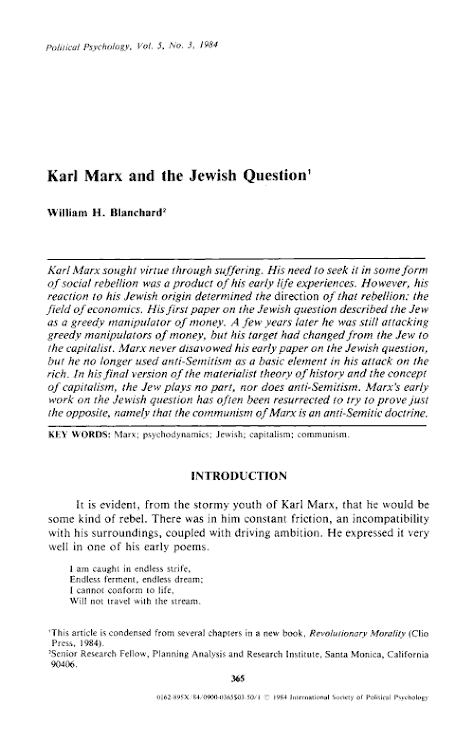




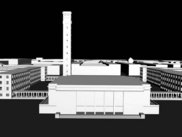






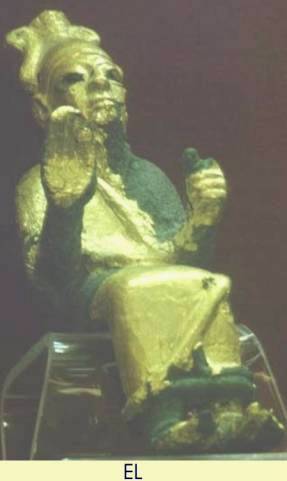






























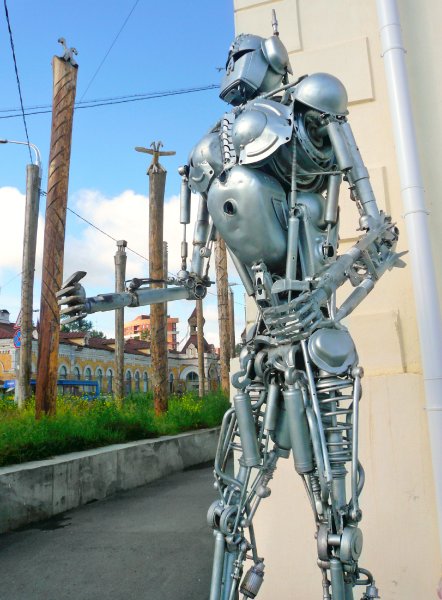


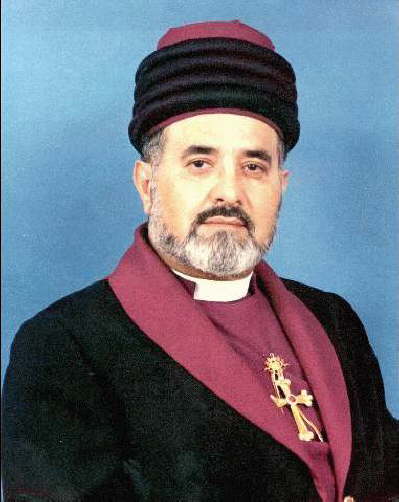+Anniversay+Dinner.jpg)





